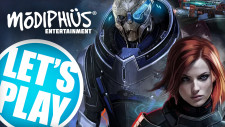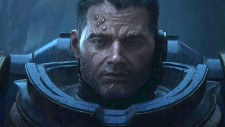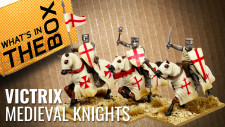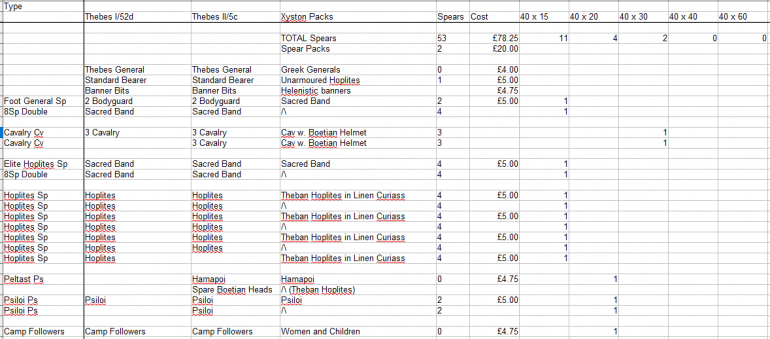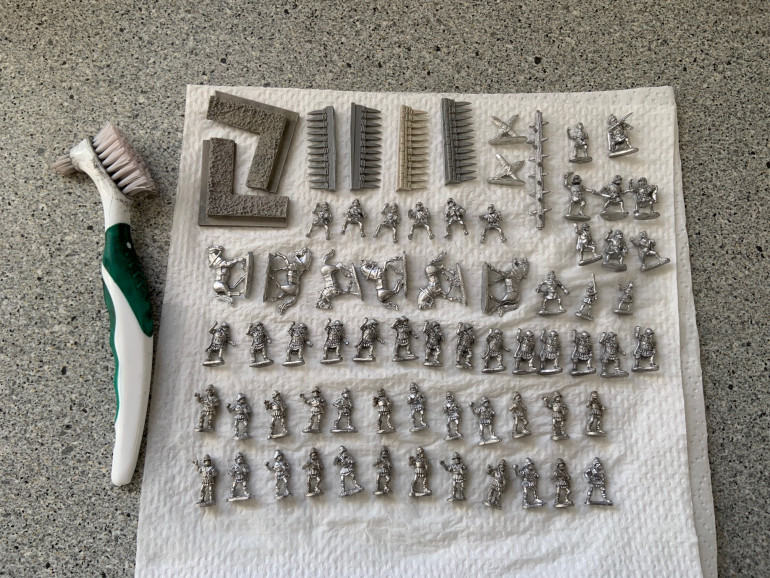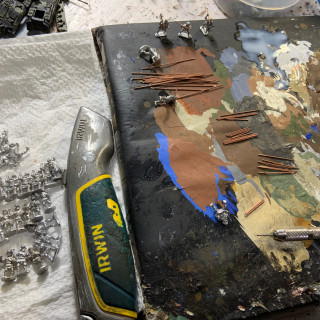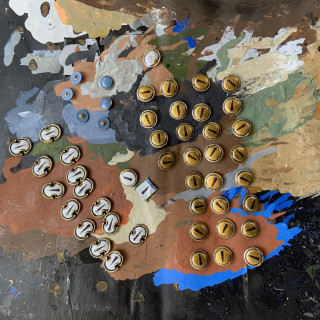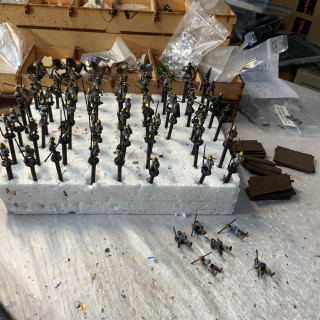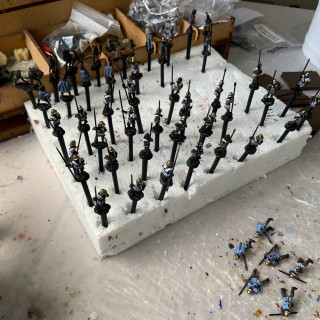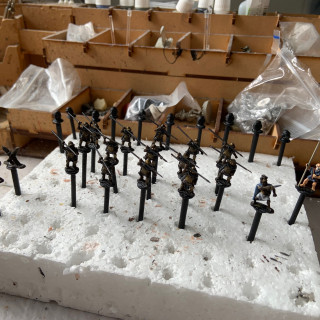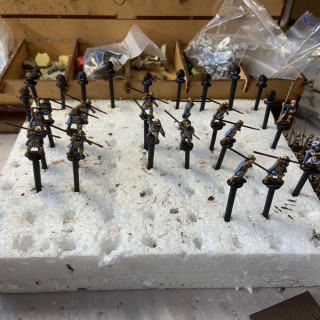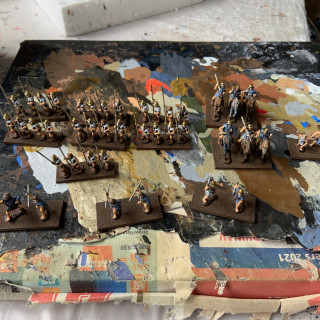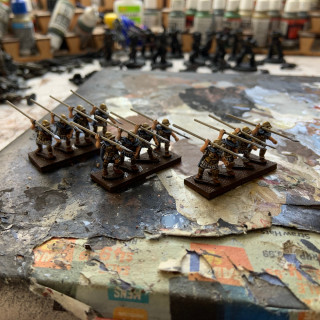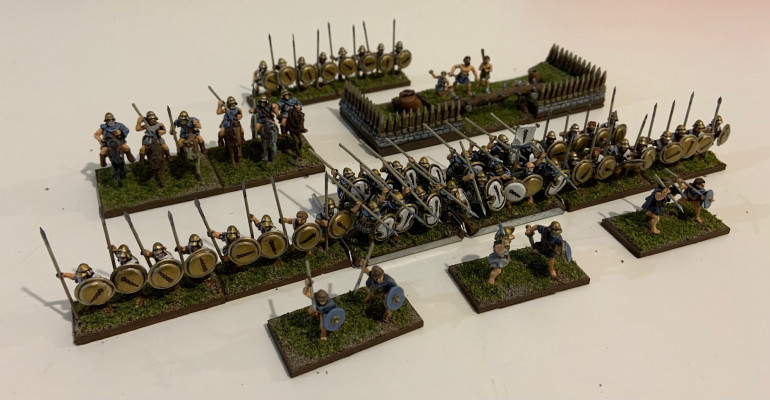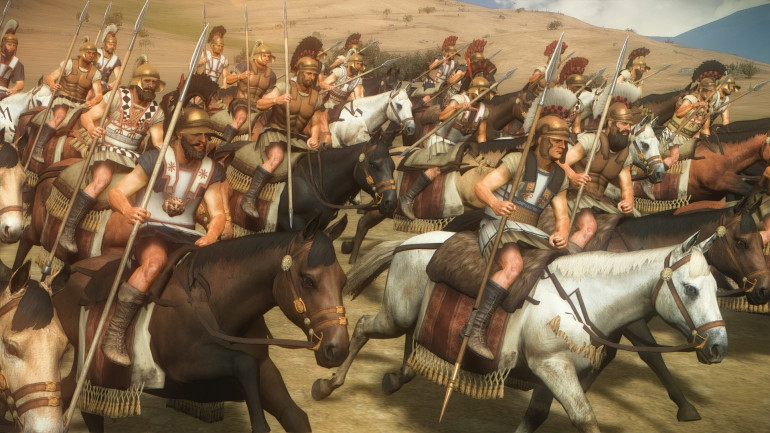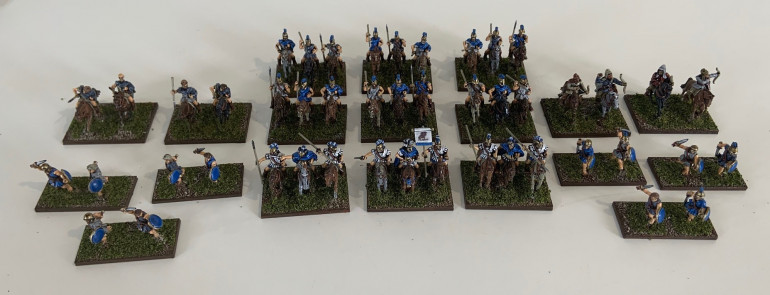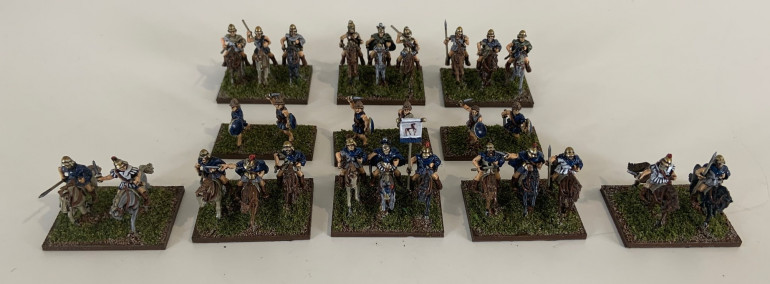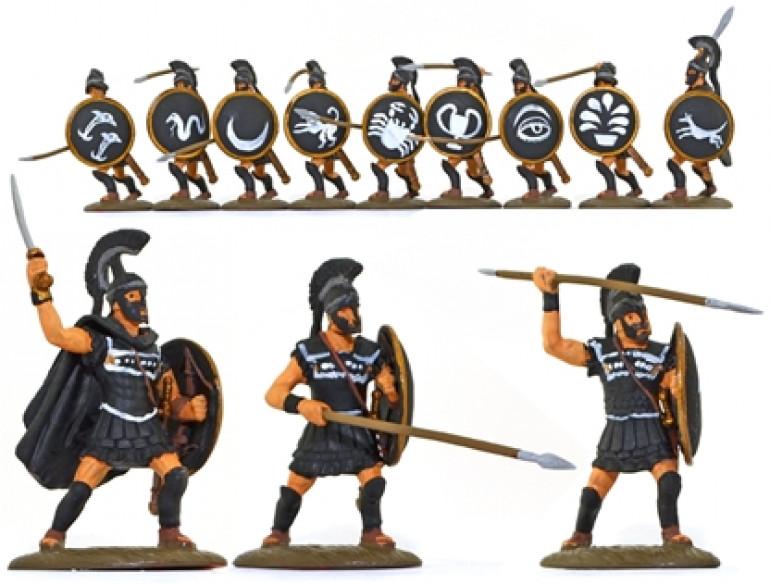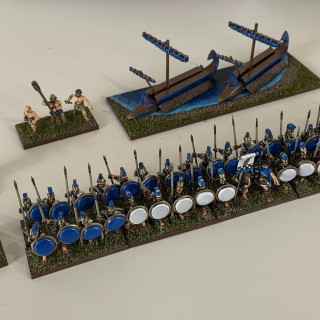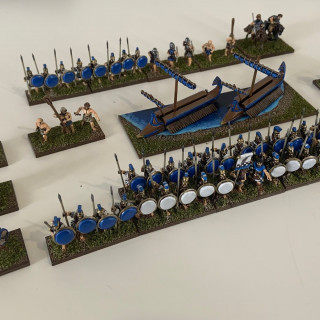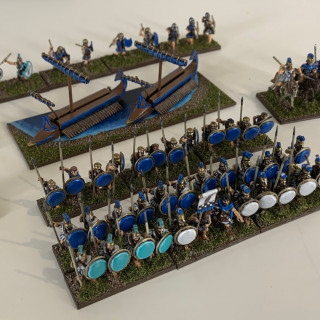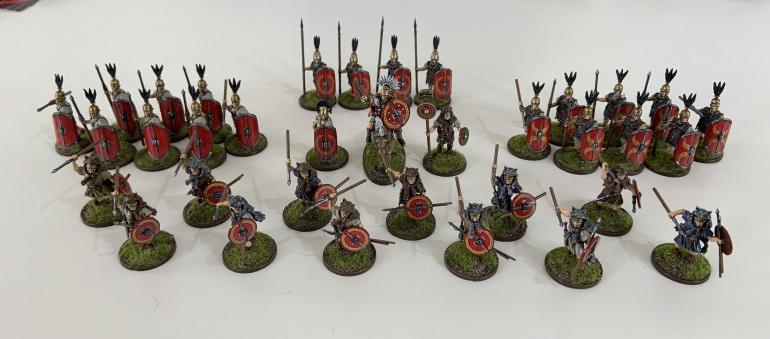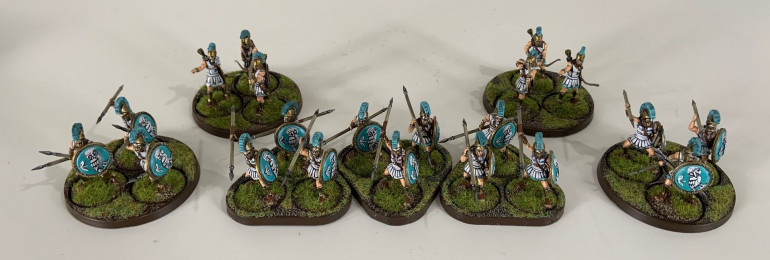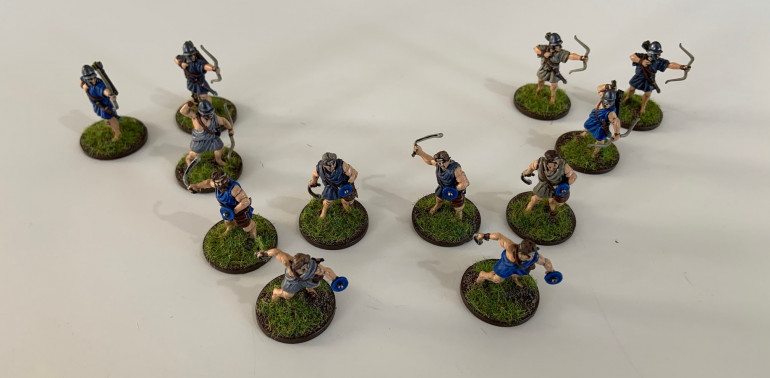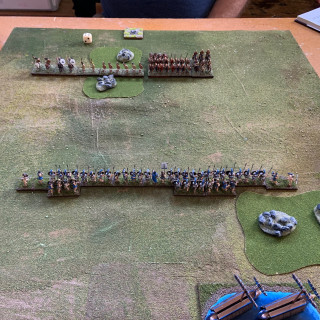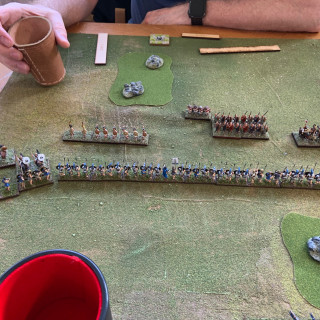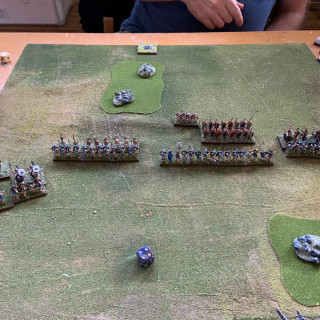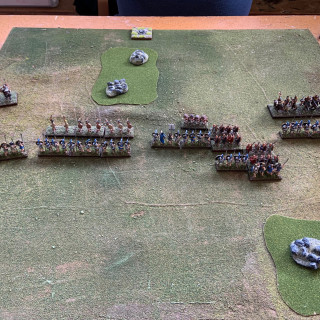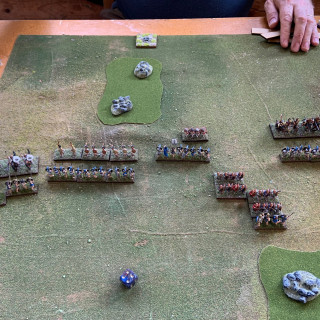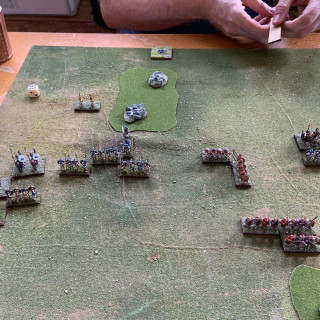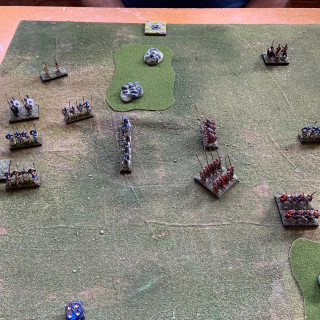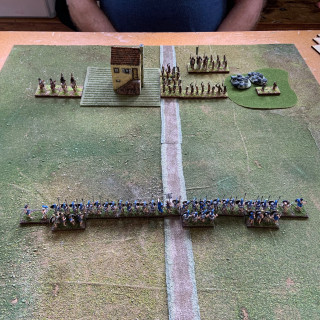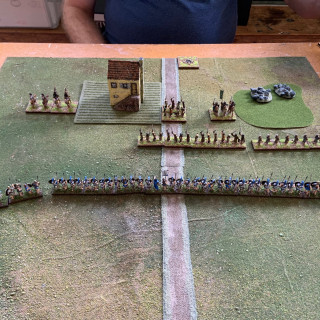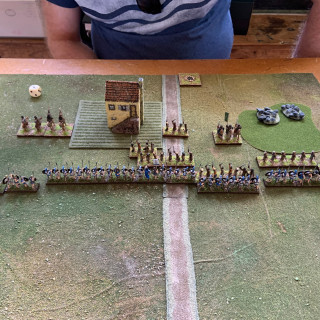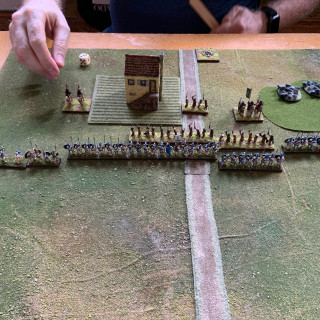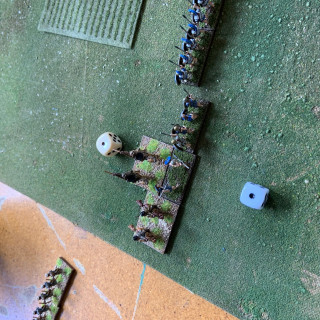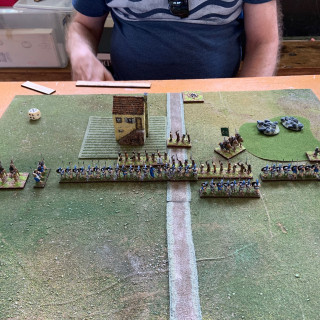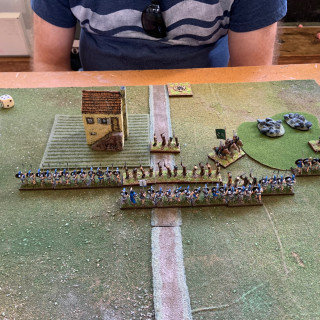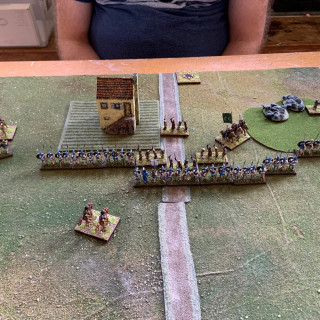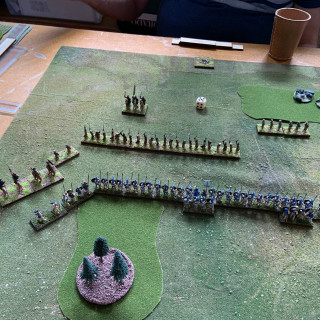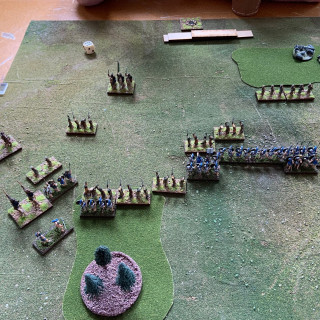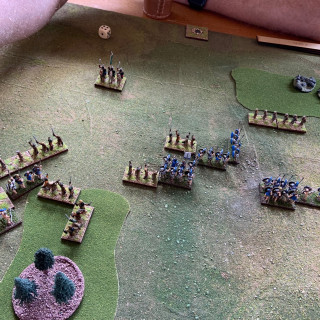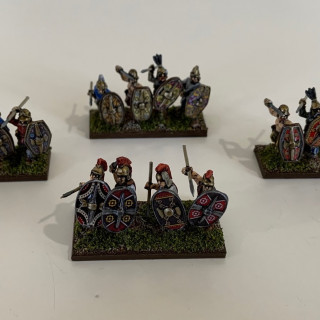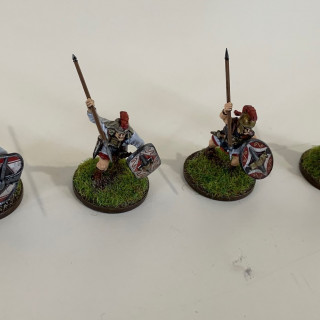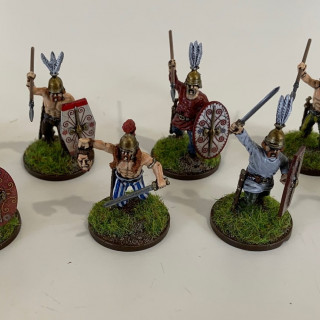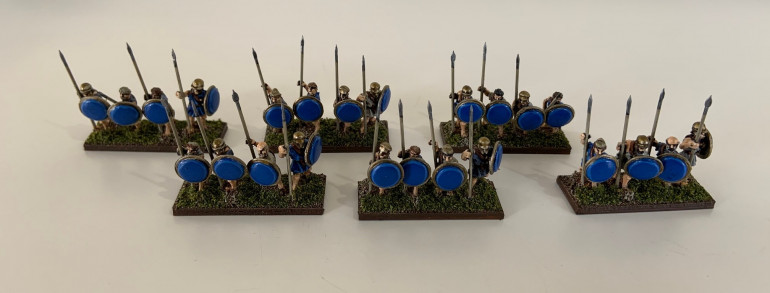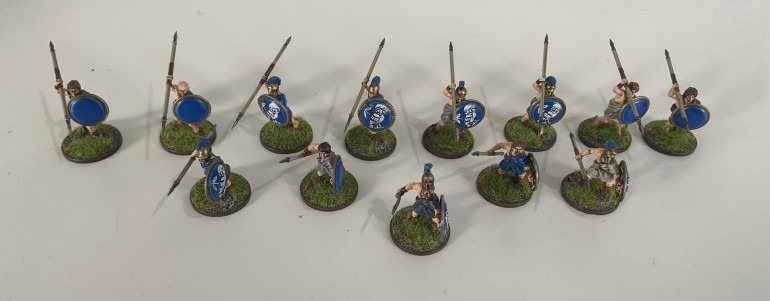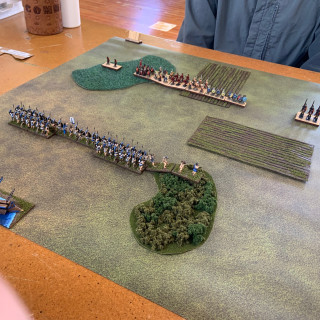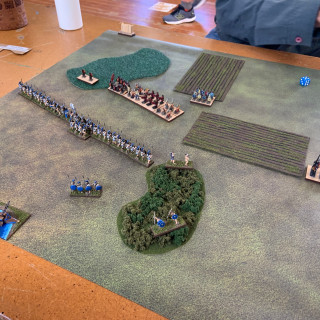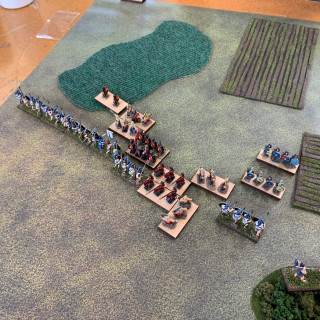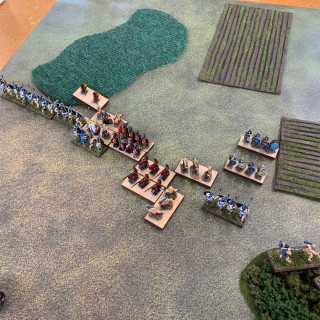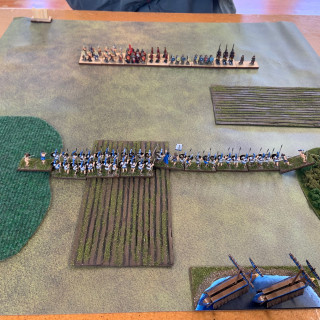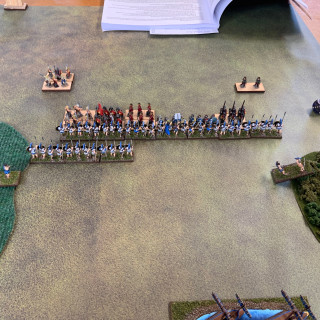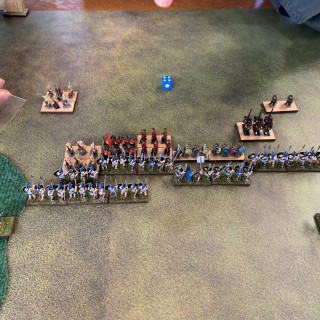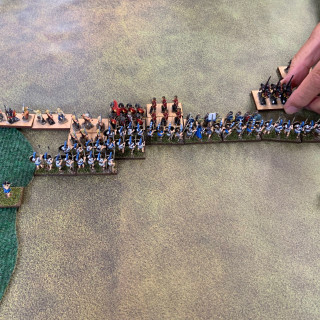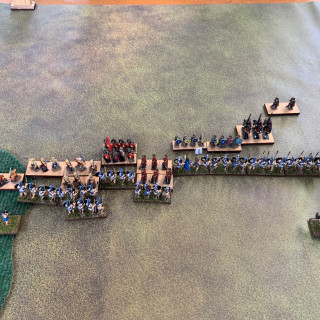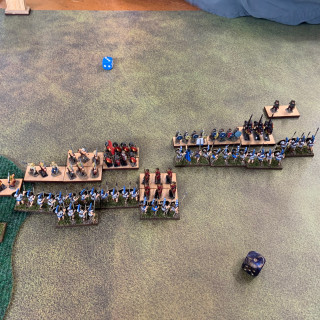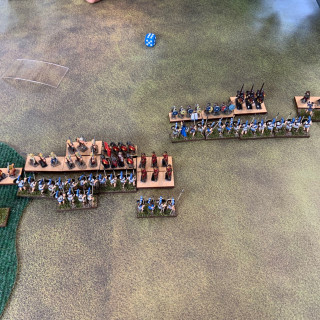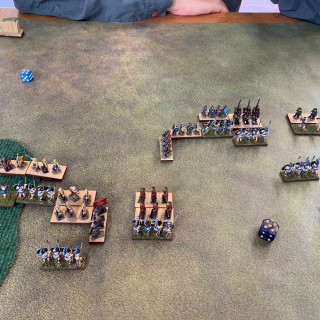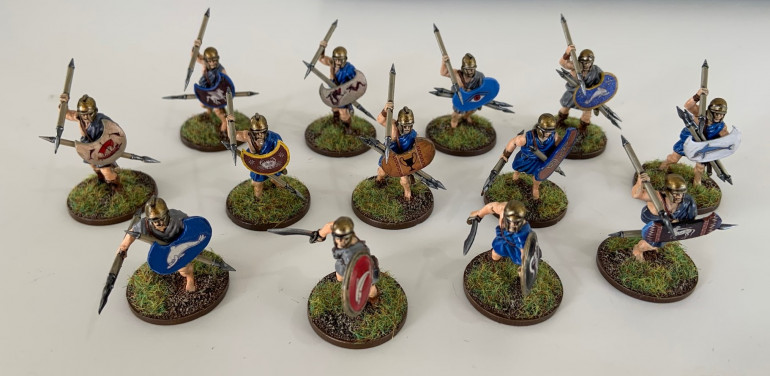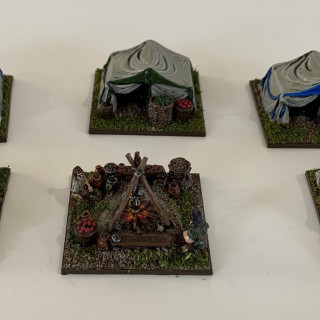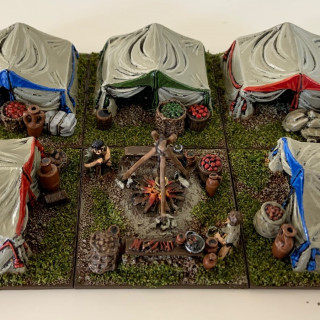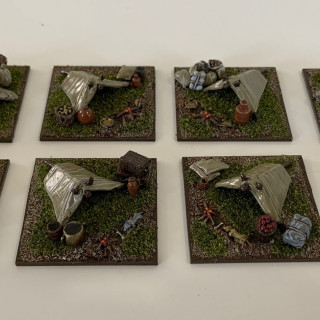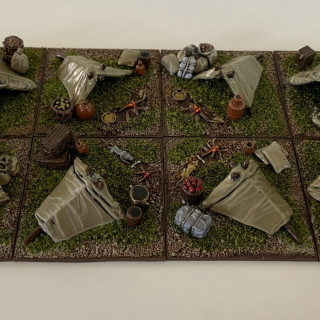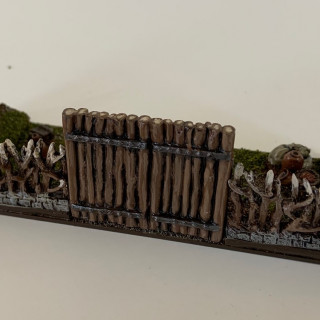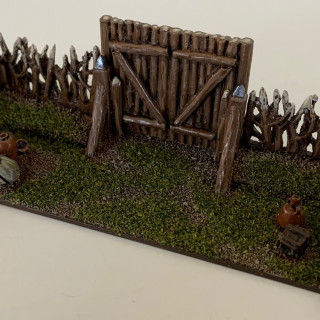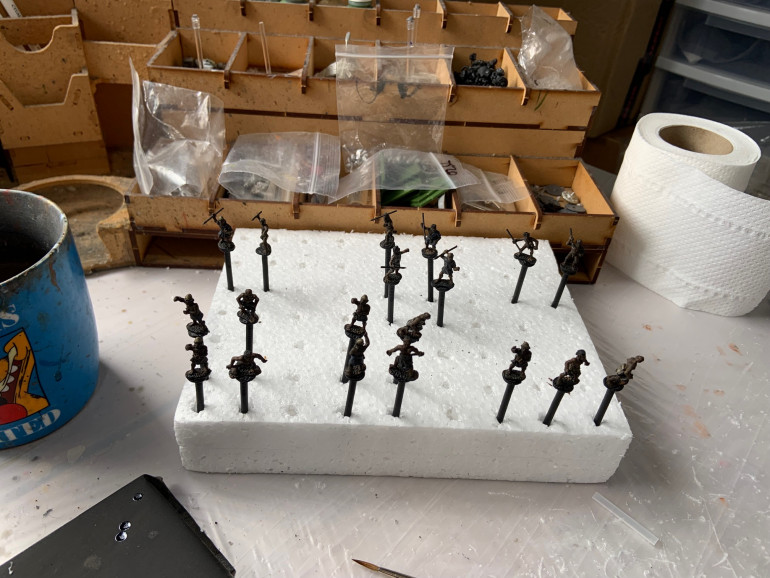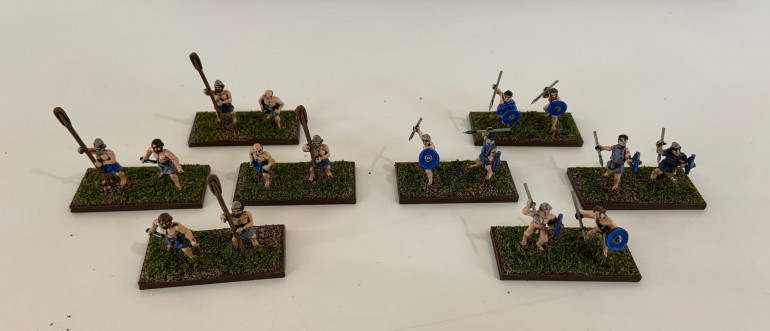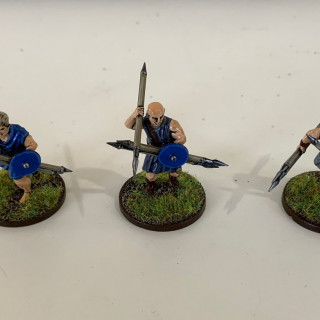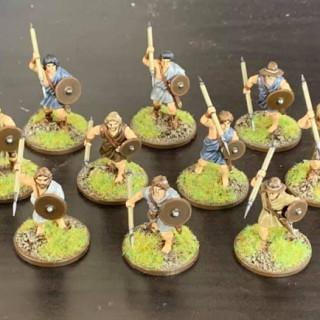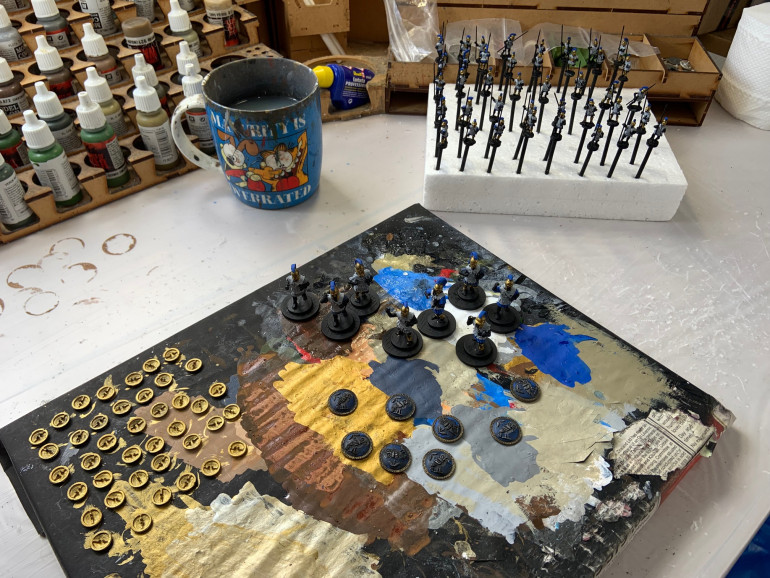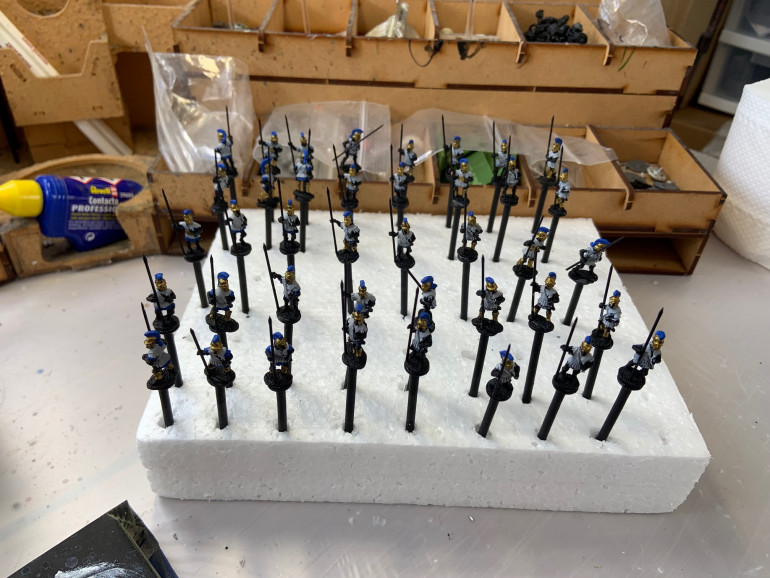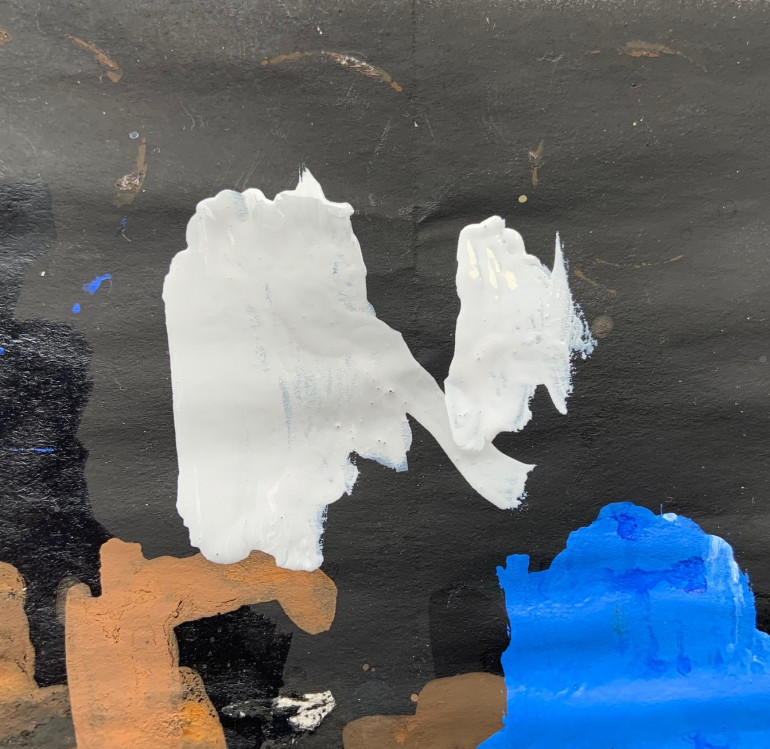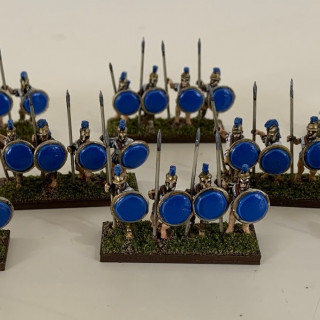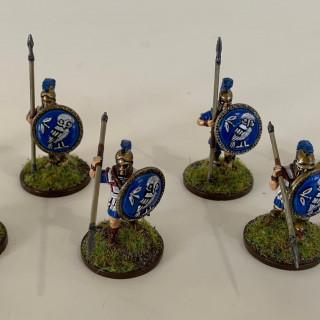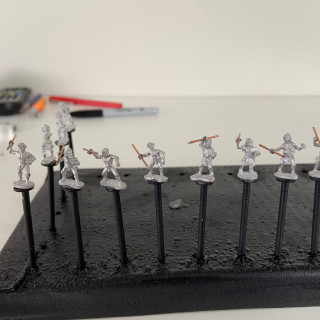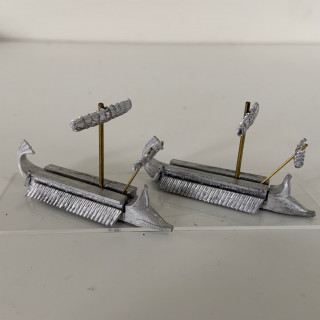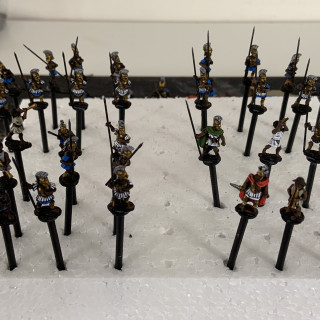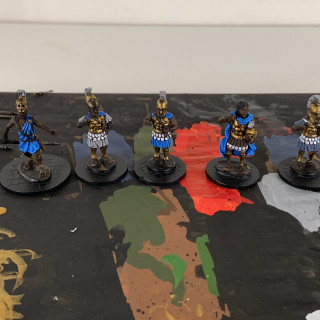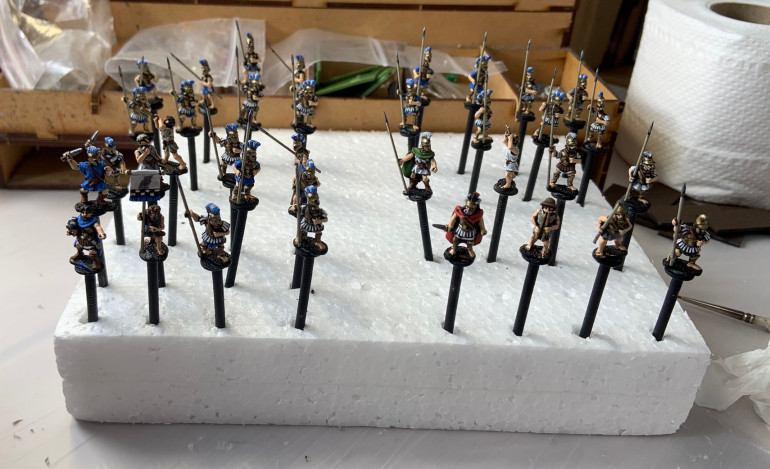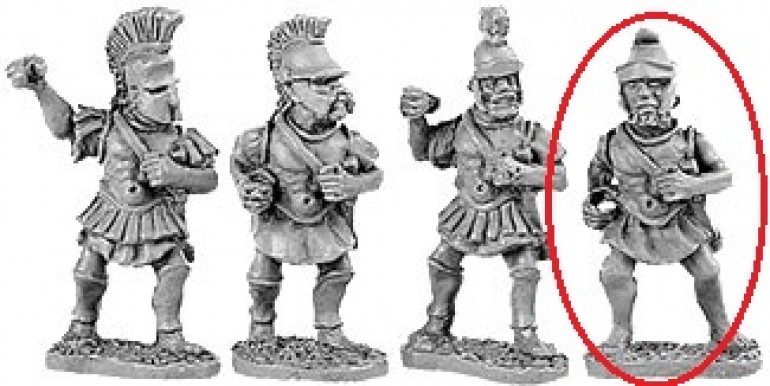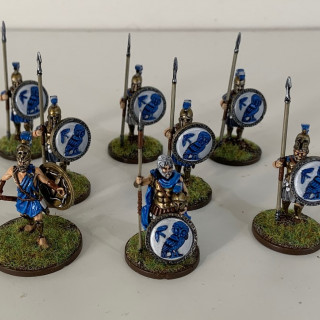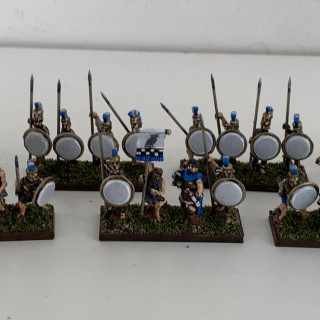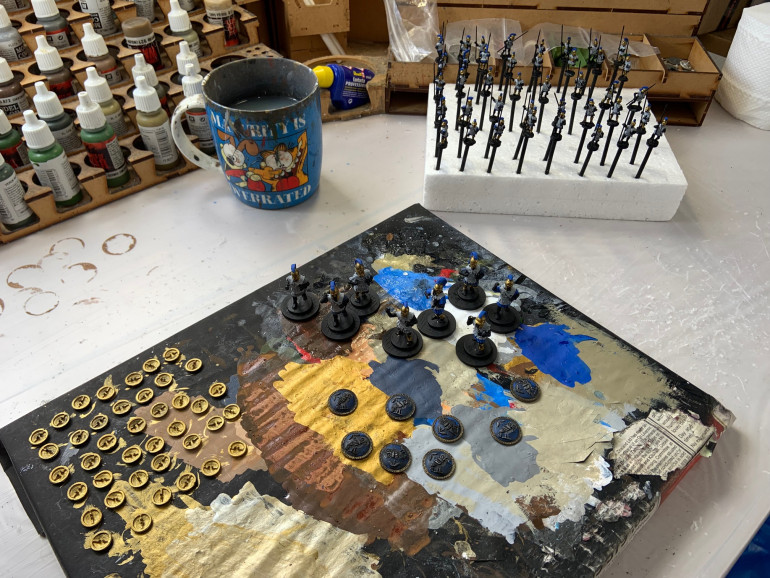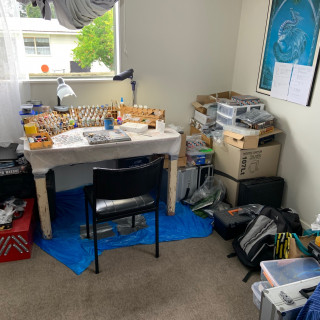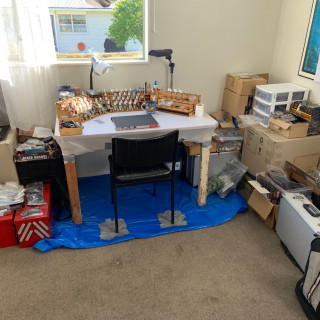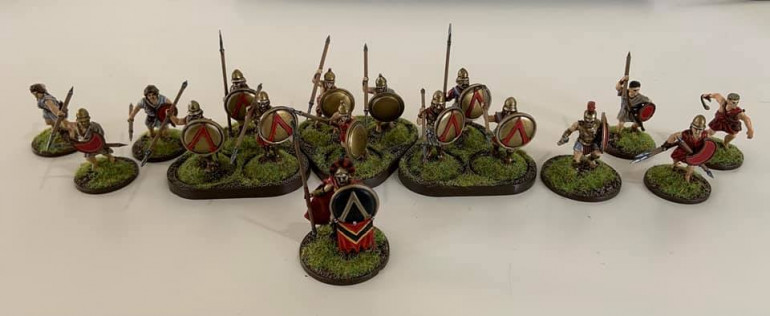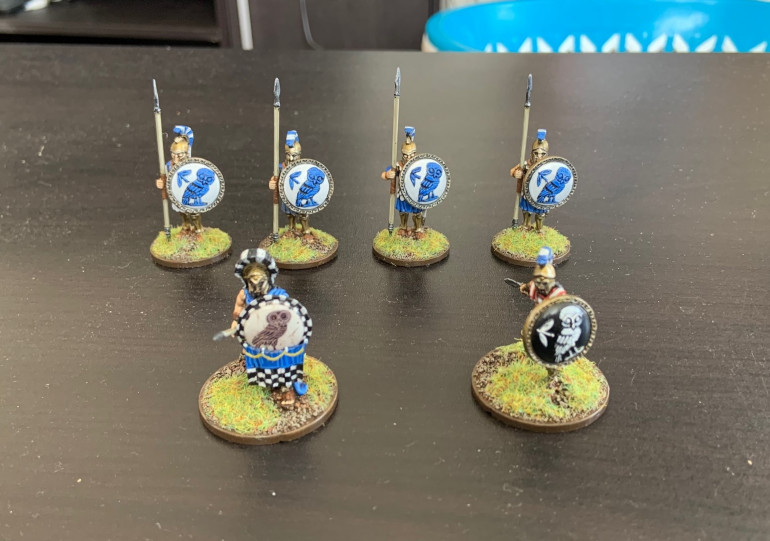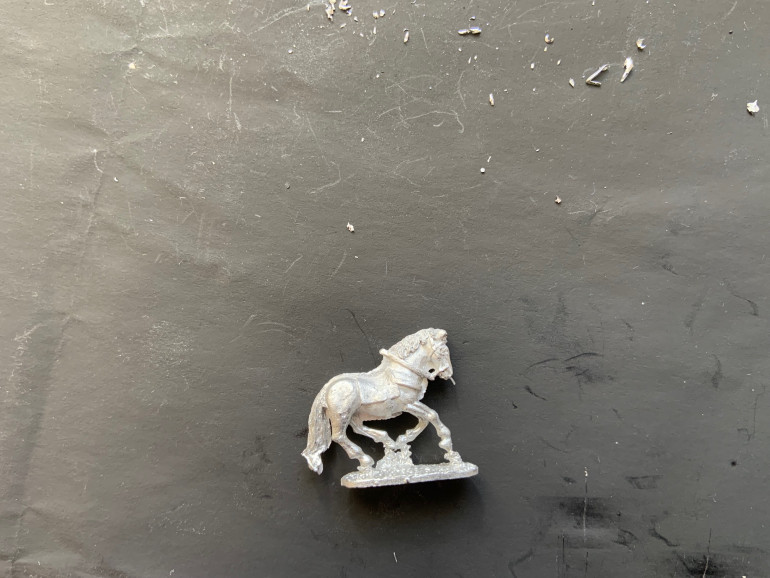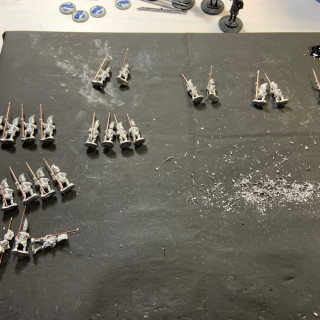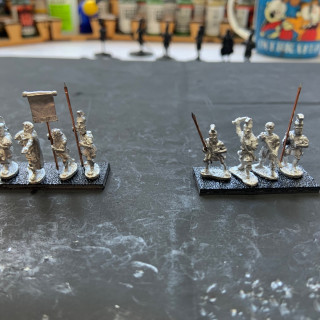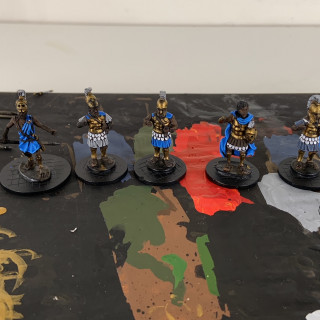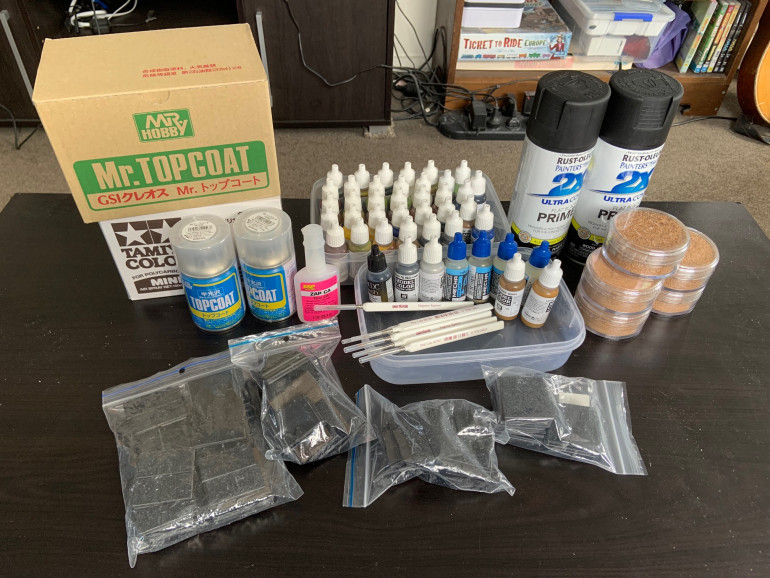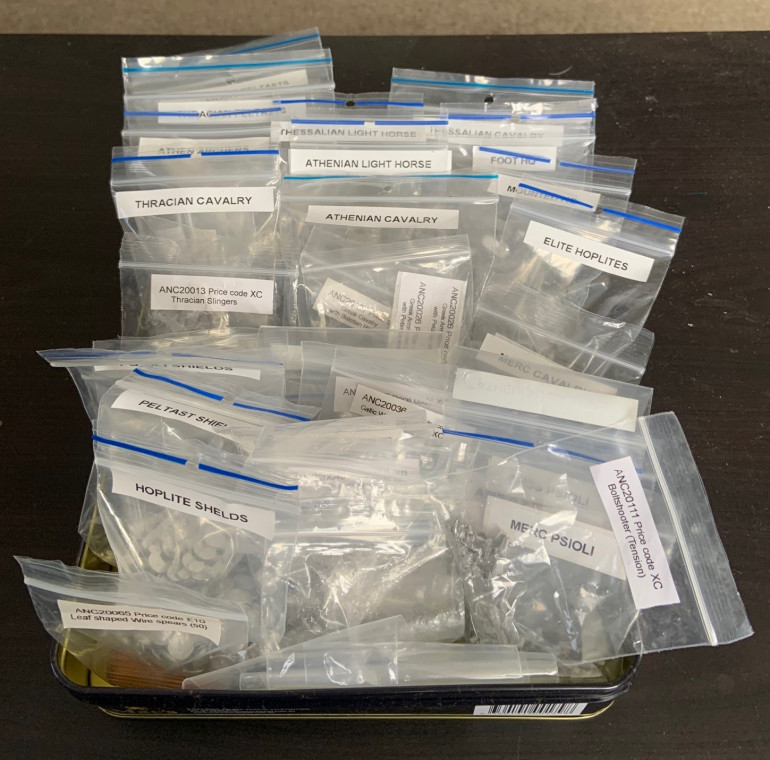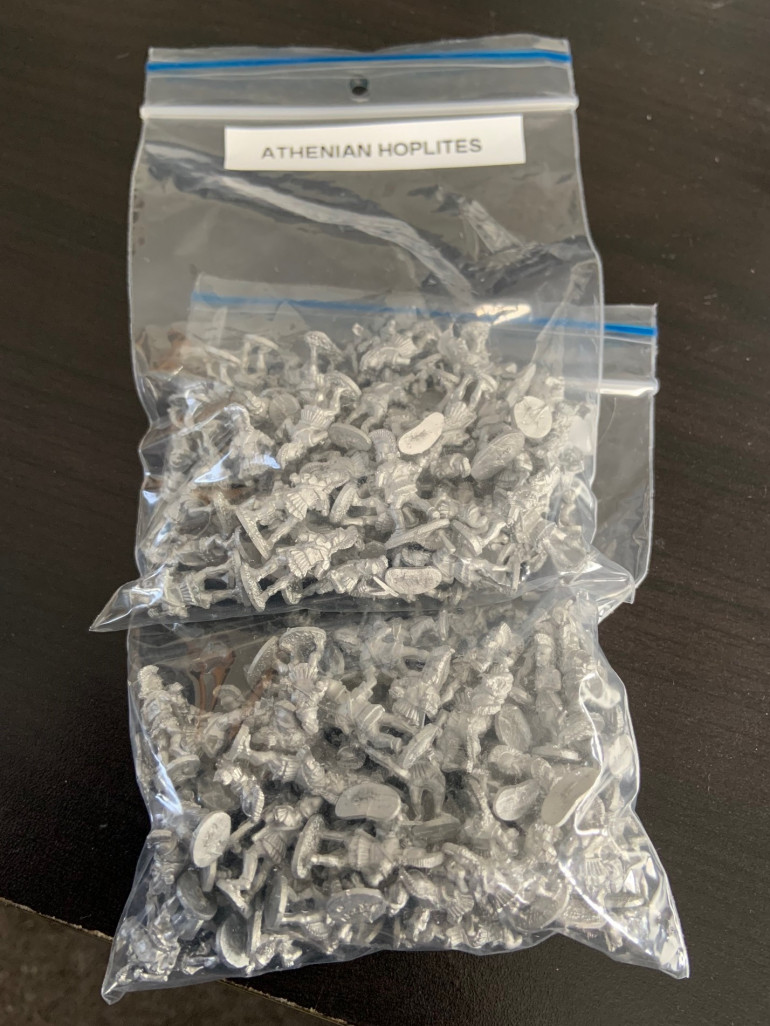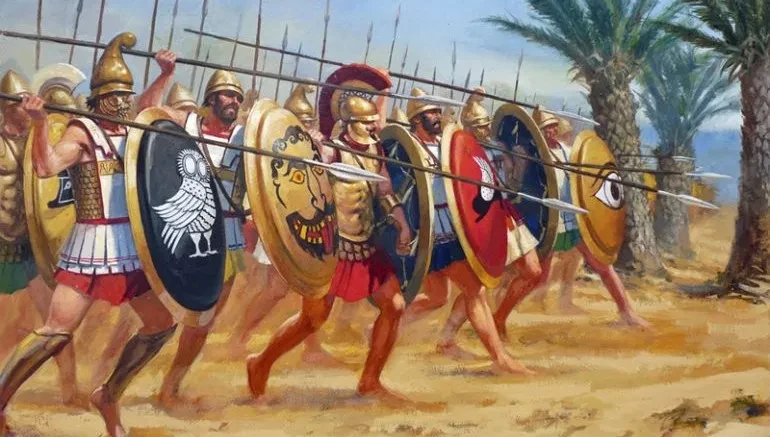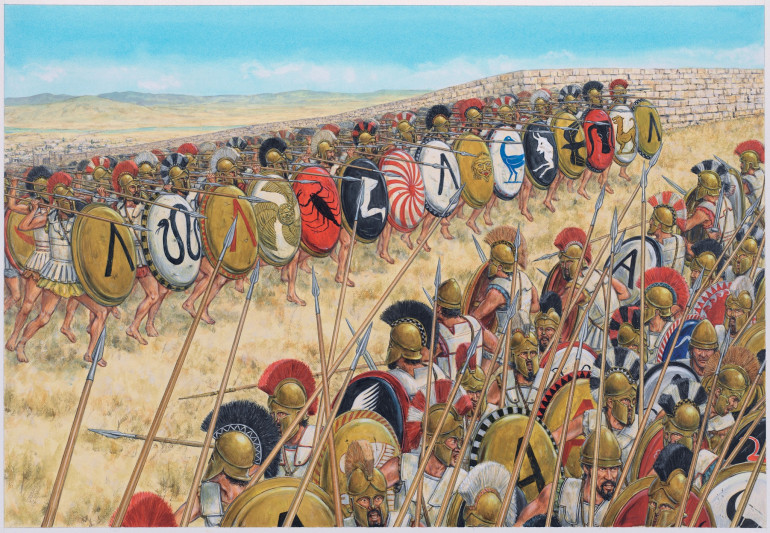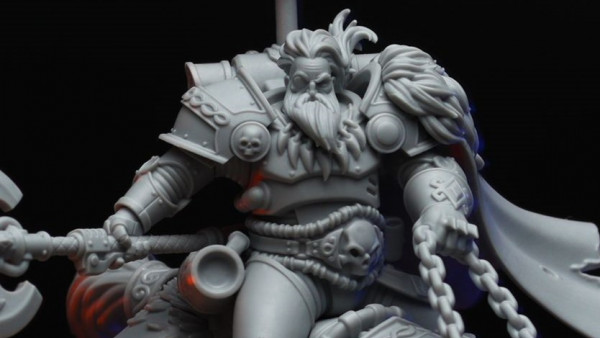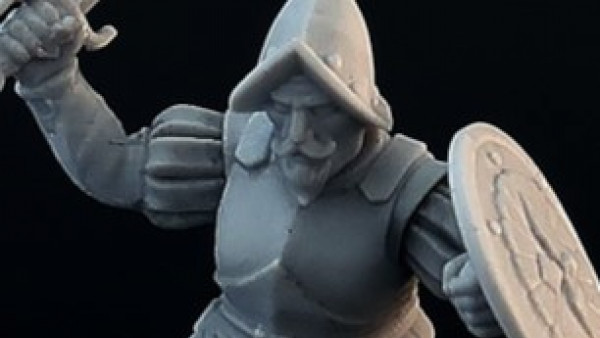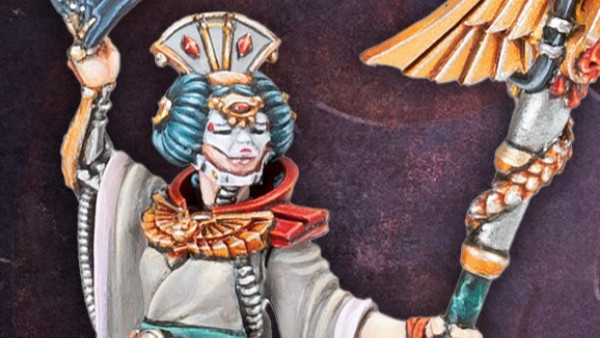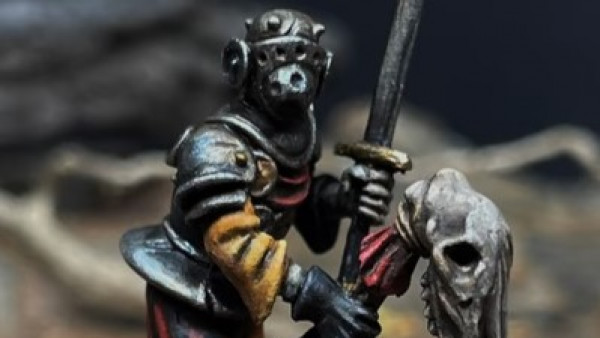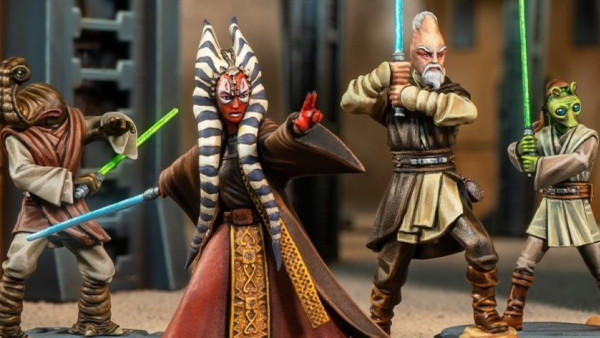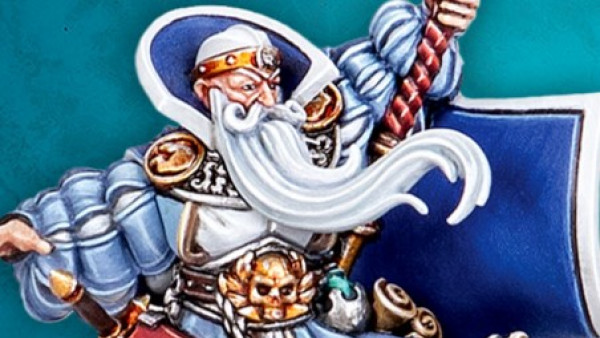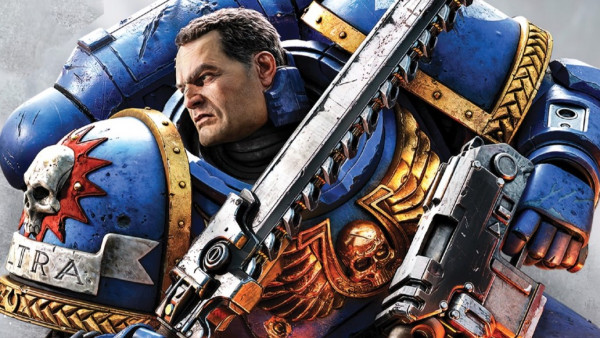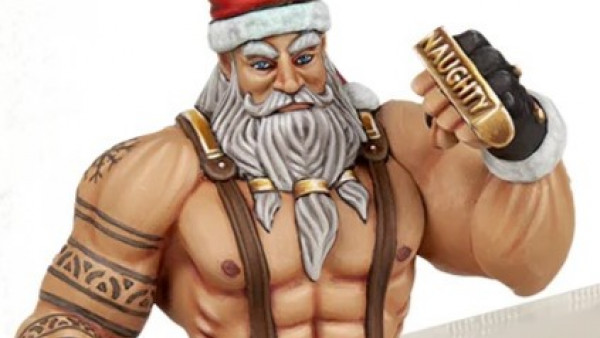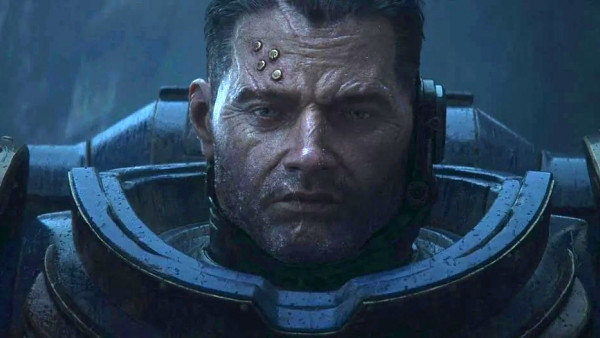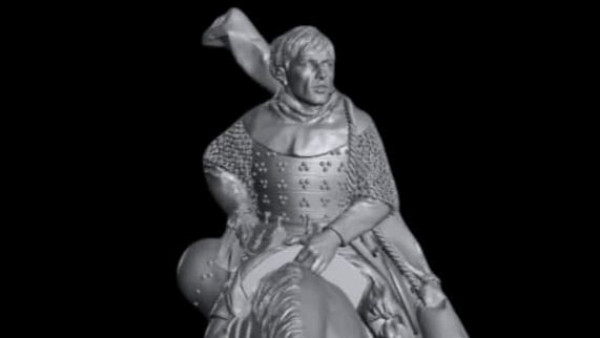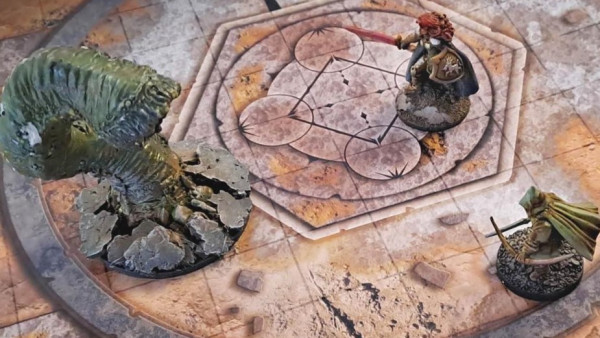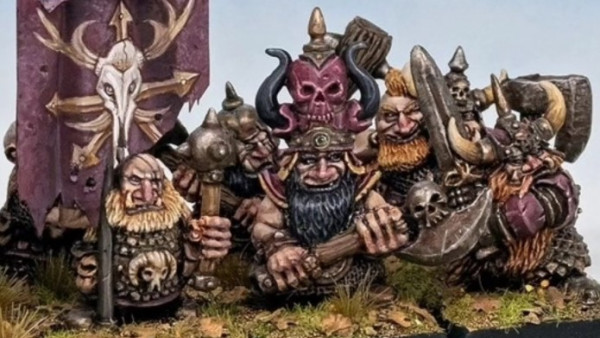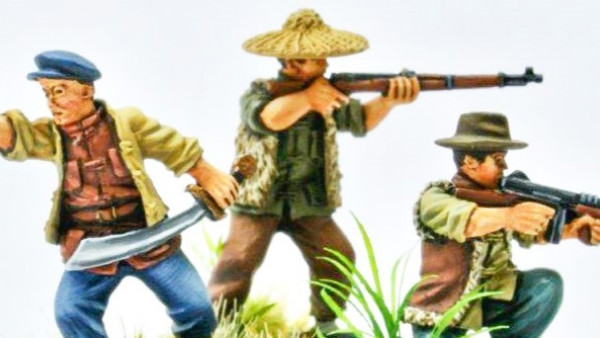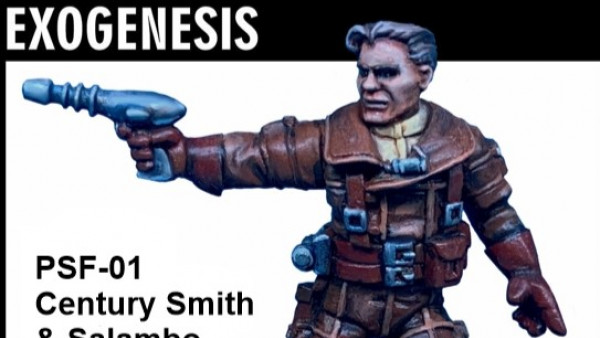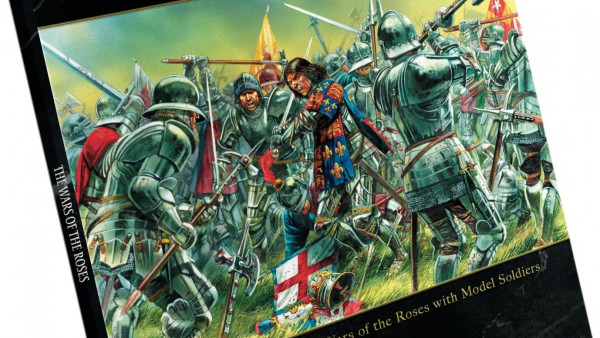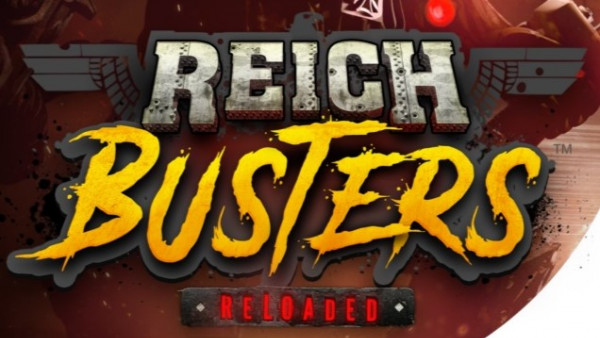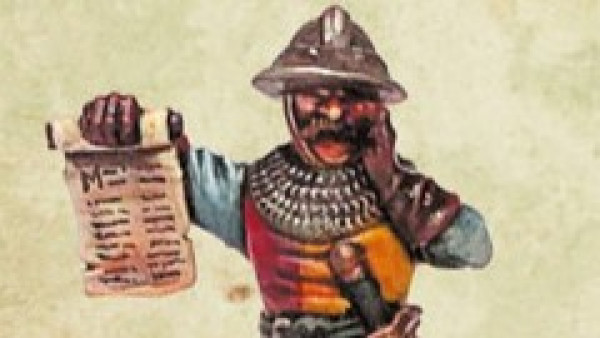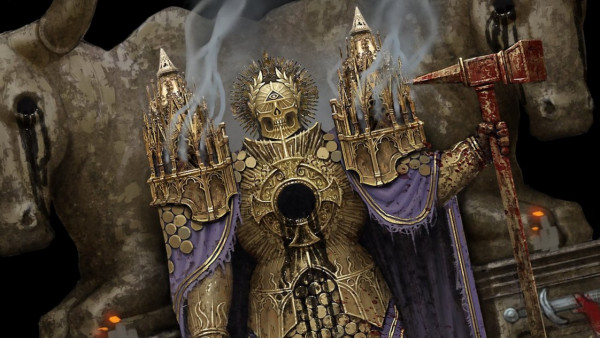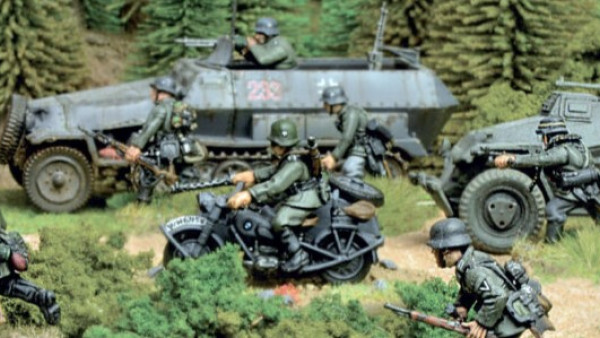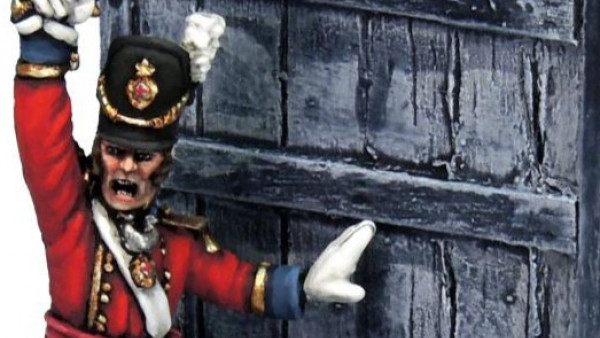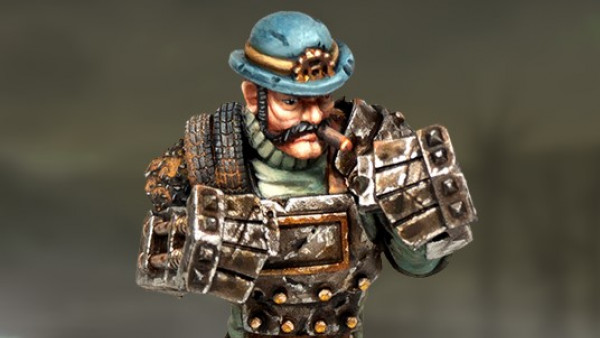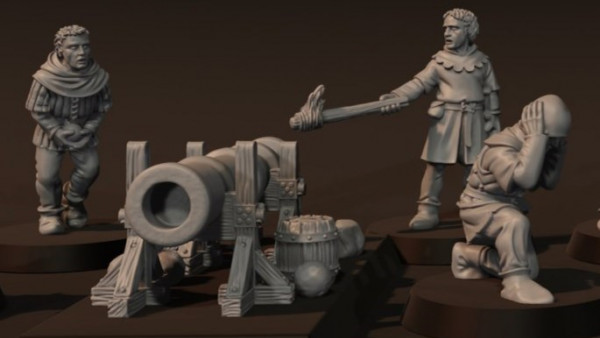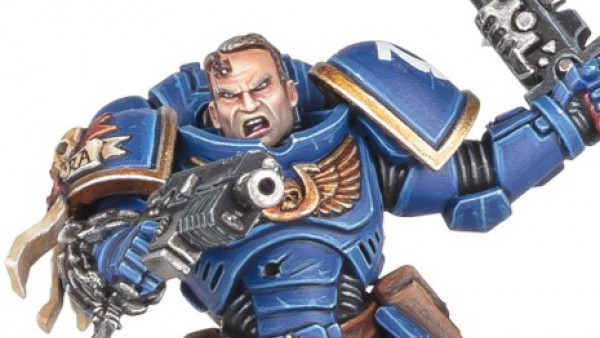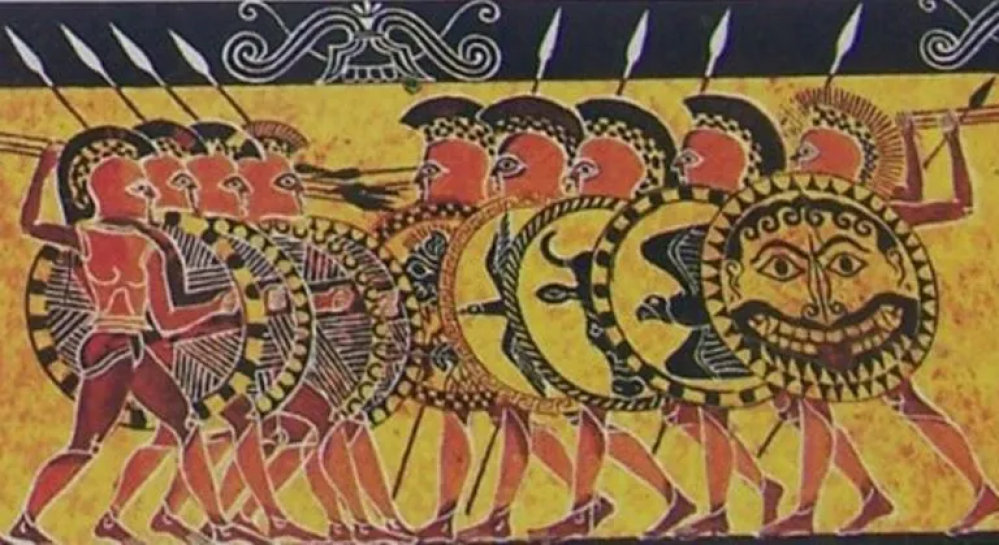
Enyalios!
Recommendations: 491
About the Project
Building of a 15mm and 28mm Hoplite army for a variety of rulesets
Related Game: SAGA
Related Genre: Historical
This Project is Active
The Sons of Heracles
So, after having completed two full corps of Athenians this year, I decided to end on something a bit different. Whilst the next step on this project was allies, I decided to do some allies that aren’t on my project list.
One of the things about DBA is that they list a series of historical allies a certain army can use. Normally, this allows you to take units that your list would not allow – in my battles vs the Scots (see the reports below), my opponent decided to include some cavalry from the Strathclyde list as well. I also see it as a historical reference as to which list I can use in a larger game as allies. Athens has quite a few options, mostly having access to the Mercenary Hoplites and the lists of other city states, but also some access to the Acheminids, Thracians and a few others. But the one that caught my eye was Thebes.
Thebes is one of those Greek city states that I had and had not heard of – most the information I have on them I read after I started playing DBA. The City itself is notable because it was allegorically built by the hero Heracles, and the people considered themselves to be his decedents, which is why you’ll see the Club of Heracles as one of their main emblems. The city itself was situated in the Northern parts of Greece, and was really outmatched by the major powers of Classical Greece – Sparta and Athens. During the Perisan invasion of 480BC, whilst there was a contingent of Thebans at Thermopylae that fought to the end, Thebes eventually joined Xerxes, fighting on his behalf up to and including the Battle of Platea.
What did allow Thebes to punch above its weight, however, was their use of the Sacred Band – an elite force of 300 Hoplites who were professional soldiers, recruited as a counter-balance to the more militaristic Spartans. And the Sacred Band is represented in DBA through the use of the 8Sp element type.
Whilst most of the elements in DBA are a single base, there do exist several double-based elements. 6Kn (6 Knight) are used to represent heavily armored shock cavalry, such as Roman or Byzantine Cataphracts. 8Bw (8 Bow) are generally used to represent a formation of archers sheltering behind a shield wall, such the Persian Sparabara. 8Sp (8 Spear) are a more elite spear formation, and have a bonus in close combat. By taking Thebes as an ally to Athens (they fought together in the Corinthian War against Sparta), I could get access to this unit type.
Whenever I start a new DBA corps, I begin by listing out which units I’ll need to complete the various variants, and use that to define which packs I should order. I also use this option to determine how many spears and even bases I’ll need – given that I’m in New Zealand, buying from the UK is usually a four-week delivery time, and I don’t particularly want to put something on hold for that long because I’m one shield short. I also look into what minis I have sitting around spare – in this case, I was able to use some Psiloi I had spare sitting around, which cut my cost down a bit.
Once the order arrives, I clean it all up – soapy water and a scrub with an old toothbrush is usually enough to get rid of all the extra oils on the minis.
I then add the spears to the minis. As mentioned above, Xyston sells 50mm long brass spears, and I just cut them down to the various type – Javelins used by Psiloi and light cavalry are 15mm long, short spears used by cavalry are 20mm, and hoplite spears are 30mm. I add these prior to undercoating because the holes I normally slip them into are too small to take a fully painted spear (yes, two layers of paint are enough to do that). Also, painting spears on the models themselves is actually easier than painting them separately, especially if you’re dealing with a 15mm long javelin.
I also have a tendency to paint the shields separately and somewhat before everything else. The emblems here are from Little Big Men studios – I ended up using a full sheet to finish these, but I still managed to scratch one after completion, ruining its emblem. Oh well, that’s the one the standard bearer is getting.
In total, this force had 60 humans and 6 horses to paint, which is way too much to paint all at once. I try to cut the paiting into batches of similar models, although, in retrospect, I should have cut this part down further, doing three batches and separating out the standard Hoplites from the light troops, instead of just separating out the Sacred Band as a separate batch.
For Thebes, I wanted another blue colour, but softer than the Athenian Blue. After some thinking, I remebered I had a bottle of Horizon Blue (Vallejo 901) sitting around, from when I was thinking of doing up some WW1 French troops. It was probably a little lighter than I would have liked, almost a baby blue, but I think it worked out well in the long term. I certainly like how the light blue cloaks of the force turned out, and how they contrast against the darker blue-grey cloaks of the Psiloi.
After each batch is completed, I glue them to their bases. It must be noted that the Xyston minis are actually closer to Heroic 15mm than standard 15mm, and in some cases, this can cause some cluttering of the bases. I can mitigate that by rotating some minis to better fit, but I had a bit of a problem with the Sacred Band in this case. Because I had insinsted on 30mm spears for them, despite them being held horizontally rather than vertically, they did have some problems with ranking the bases up. For the next set like this, I’ll definately cut the spears down a bit.
Finally, I add the base texture. This a pretty standard process for me – sand, paint it all brown, drybrush with biege for hilights, and then add flock. For some other 15mm minis, I sometimes add static grass, but for DBx elements, the flock only works out well.
And with that, we have another corps completed. The last project of the year.
The sound of thunder...and the smell of...
DBx Bases: 94 + 7
15mm Spears: 197
DBA Corps: 6
Saga Points: 8
DBx W/D/L: 2/0/6
So, with the Marines done, it was time to get onto the Horse, which is the last major component I need for most of the Athenian armies I’m doing.
And I over did it. Again…
I have a problem when painting in that I’m perpetually unsure if I’ll be able to recreate a mixed colour or painting style in future models. I can kinda handle the former by writing down my paint mixes for future reference, but I still have a tendency to paint all of a certain type of model at once so I can at least try to keep them uniform. This is what led to my 21 models at a time for the Marines, and how I ended up doing 30 bases at once here.
And those 30 bases included 57 horses of varying colours. Seriously, the number of minis I’ve painted over the last two months could be enough to do two or three full DBA armies…
When we in the west tend to think of cavalry, we tend to picture Napoleonic Dragoons or medieval Knights. Buy the truth is that this type of cavalry is actually a more recent development than that of the mounted warrior. The general consensus is that the European development of the stirrup in the 1st century BC caused a shift in cavalry tactics, allowing mounted warriors to more effectively shock charge and engage the enemy whilst on horseback. Most other style of cavalry tended to skirmish and engage in hit and run attacks on enemy lines, screening the main battle line. The first shock Calvary units was really the Macedonian Companions under Phillip and Alexander, being closer to Lancers and Knights than their contemporaries.
In DBA, this divide between shock cavalry and regular cavalry is also modelled – Cavalry elements are faster but weaker than some foot units, more in line with the weaker Auxillia type than the more combat focussed Blades type. If you want a horse unit to break the enemy lines, you need Knights – although still not as strong as a Blades unit, they have the ability to ride down a lot of foot elements if they so much as beat an enemy unit, rather than having to double its combat score.
For the Athenians, they did have a standing corps of cavalry, drawn from the highest classes of society – its one thing for a citizen to own their panolpoly of armour, but a warhorse…yeah, you need to be rich for that. The city states that created the best cavalry were the Thessalians in the Greece itself (natural horsemen), and the Tarantines from Italy, who hired out as Mercenaries to multiple force around the Mediterranean.
In DBA, the Athenains don’t get much in the way of cavalry to support their battle line. There are a few instances of mounted officers, and a couple of extra units. But even in DBMM, the most the Athenians get are 6 cavalry elements. Not exactly much of a support formation, but what the heck. Additionally, the Athenians also get access to some Light Horse support to act as outriders. Before 365BC, these are Horse Archers, which came from the Thracian range. But after that, you get an element of Prodromoi Light Horse. When I first read this, I immediately thought “Hang on, isn’t’ that the name of the Macedonian Light Cavalry”. Well, it is, but the two units couldn’t be more different.
The Macedonian Prodromoi were a subsection of the Companions – equipped with slightly shortened Sarissa and unarmoured, they scouted for the force, and guarded the right flank of the Companions in battle (which meant they guarded the entire army’s right flank, as the Companions were traditionally placed on the right of the army’s line).
In Athens, however, the Prodromoi were mounted javelin men, mostly raised from the lowest classes in Athens. Whilst most Greek warriors provided their own equipment, the prodromoi were supplied by their leaders instead, and probably forced a skirmishing force for the main cavalry, as well as assistants and aides for the officers in the army.
The final element painted up were Hamipoi. Now, I can’t seem to find any sort of direct translation for this troop type on the web, but in DBMM they function as light infantry that can support cavalry elements. This kinda make a bit of sense, as cavalry on its own can easily be swamped by enemy infantry if their initial charge doesn’t break the line, so some supporting infantry would aid them. Also you can see this sort of doctrine in the Battle of Gaugamela in Alexander, when the Companions have some infantry running along beside their horses in their initial maneuver.
So the Athenians were settled, but what else did I do up?
And then there’s the Thessalians.
When I was first thinking about my Greek armies one of my clubmates told me “if you’re going to do Greeks, have some allies as well. You need more than just spears, as such an army is not fun”. He made sense, so I immediately though about including the Thessalians as allies to break up the monotony and add some maneuver to my force. I’m planning on working on them later, but I figured I’d get some of them started at least.
The issue was mainly how to paint them. I didn’t want them looking too different from my main force, but the issue was that searching for “Thessalian Hoplite” only really came up with this picture:
All the others instead showed generic Hoplites or the Thessalian cavlary. But it occurred to me that this might be the answer – instead of the standard Athenian Blue, use a darker blue for the Thessalian units. That, plus the Thessalian cav using Boeotian helmets instead of the usual crested ones would be a good way to mark them out as separate. So, a few units of commanders and some Hamipoi to support them were added to the list.
And finally, just because I love torturing myself, I also did three elements of Mercenary cavalry – the Mercs are another corps that I’m going to do up as something distinctly different to the other forces, and, with them, uniformity isn’t so much of a concern. But I still ensured they all had similar helmets so that they had some cohesion, rather than all looking different.
With those done, I had reached a major turning point in my project – three of the four Athenian corps types were done!
L to R: I/52e Early Hoplite Early Athenians, I/52f Early Hoplite Later Athenian, II/5b Later Hoplite Athenian
The only Athenian army not done yet was the Hellenistic Athenians (II/31h), but that one requires Thureophoroi, and I really want to paint something other than Athenian blue for a bit.
So, coming up next, some allies…
Needing a Sea Change
DBx Bases: 64 + 7
15mm Spears: 156
DBA Corps: 1
Saga Points: 8
DBx W/D/L: 2/0/6
What a nice nap…what d’ya mean its nearly spring again?
The last couple of months have been…busy. I’ve done a few other projects in the meanwhile – hoplites, Necromunda, a whole Roman SAGA force…
But lets get back on track for now. As I said last time, Horses and Tridents…so lets get the Tridents out of the way.
Ancient Naval warfare tended to be based around two main forms of offence – ramming and boarding actions. There were efforts to mount some artillery at times – stone throwers, bolt throwers etc, but ramming and boarding were the main forms of attacking. So the naval gameplay in AC: Odyssey where you use massed bowfire to sink enemy ships is basically wrong – I think they were trying to emulate the gameplay from Black Flag there. But the ramming….ooh yes.
As mentioned earlier, a Trireme’s crew consisted of ~170 rowers, two to three dozen deck crew and officers, and 10-20 marines (epibatai) – a dozen or so of which were equipped as Hoplites, the rest as archers. The Hoplites were the primary boarding force for the ship, as the rowers couldn’t really get out of their seats that easily, and had to rely on their own Marines to protect them.
In game terms, DBMM does have the option to include ships as part of your force, and those ship in turn carry troops for landing. I figured that the best way to represent these would be to model actual Marines as a visually different force. But would they also be needed in DBA scale?
For those of you who are unaware of how DBA army lists work, here is the list for II/5 Late Hoplite Greek variant b – Athenians:
II/5b Athenian Army 448-278 BC: 1 x General (Sp), 1 x Cavalry (Cv), 1 x Cavalry (LH), 4 x Hoplites (Sp), 3 x Sailors equipped as peltasts (Ps) or Hoplites (Sp), 1 x Hoplites (Sp) or peltasts (Ps), 1 x Archers (Ps or 3Bw)
Terrain Type: Littorial, Aggression: 2, Enemies:….
As you can see, 12 elements in the army. The notations after each unit is their troop type – Sp for Spears, Ps of Psiloi, LH are Light Horse, Cv are Cavalry, and 3Bw are Fast Bowmen (4Bw are Solid, and 8Bw are a special unit type). The list allows you have some choices in your force – mostly choosing between more hoplites (heavy infantry) or peltasts (light infantry). Mostly I go for more Hoplites as you need as long a line as possible for spears to work properly.
But when I first read this, the second last item caught me out – why put it like that? And then I realised that the option there was the perfect one to include as some Marines – either equipped as Hoplites or Peltasts.
Mortal Gods also has Marines for its Athenian force, complete with their own separate models. I figured it was probably a good idea to include a few…but I now realise I really went overboard. 21 models in one go – 9 spearmen, 6 javelinmen and 6 archers. I don’t think I’ve ever painted such a large batch before.
Its been said before that you really need to paint your models in batches – 5 is usually a good starting point as by the time you’ve finished with the last of the lot, the paint on the first one is pretty well dry, and you can get started on the next colour. But this tranche of models has shown me that that is not scalable past a certain point. There is nothing more stressful that finishing colours on 10 models and realising that you’ve got the same amount to go.
From now on, I’m keeping my batches to 10, max.
Toxotai
DBx Bases: 56 + 7
15mm Spears: 128
DBA Corps: 1
Saga Points: 7
DBx W/D/L: 1/0/4
I have a lot to say about the 2004 film Alexander – the writing is terrible, the acting is histrionic, the characterisation certainly is not appropriate in places, but I will admit that the battle scenes are, by far, the highlights of the film. The costumes, the number of extras they have, the grand scale of the battle itself – I’ve not seen such a effort of cinematography made since 1970’s Waterloo.
Battle of Gaugamela Part 1
Battle of Gaugamela Part 2
One thing, however, is notable about the Battle of Gaugamela – whilst the Persians had large numbers of archers supporting their troops, the Macedonians have very little. There are a few slingers and peltasts that support the phalanx, but massed bowfire?
Here’s the thing – the bow, whilst a relatively simple weapon, takes a lot of skill and training to use – this is why during the Medieval period the crossbow was more favored by some armies, since troops could be relatively quickly trained in its use. All you needed was a strong arm, and sometimes not even that. And that level of skill is why the English took a generational approach to peasants training on the archery stocks every weekend during the Hundred Years War. And that still applied, in many respects, during the ancient era – the primary missile weapon of the classical age was not the bow, but the sling.
Which makes sense – its cheaper than a bow, training a child how to use a sling is necessary for any aspiring shepherd boy, and small rocks for ammunition were easy to find. Plus, a well placed sling stone could break an arm, a rib cage, or crack a skull. Also, the Greeks saw the bow of more of a hunting weapon, the war weapon of a coward, and one used by barbarians – sure there were archers in their armies, but they didn’t play a massive role like it would in Europe 1500 years later.
That said, there was an exception to this practice – the Athenians. Some of the sources I’ve seen have noted that, during the Peloponesian War, the Athenians had four main corps of their armed forces – the Cavalry, the Navy, the Hoplites, and the Toxotai (the archers). Indications are that the corps was first raised in the 480’s BCE of about 800-1200 citizen soldiers, usually men who were not rich enough to become Hoplites. Mentions are made of them distinguishing themselves during the Battle of Platea in 479 BCE, and it was noted that of the marine force on each Trireme, four of them were archers. That being said, the Toxotai were not well regarded compared to the other branches of the army – the old biases of cowardice and barbarism leaked over.
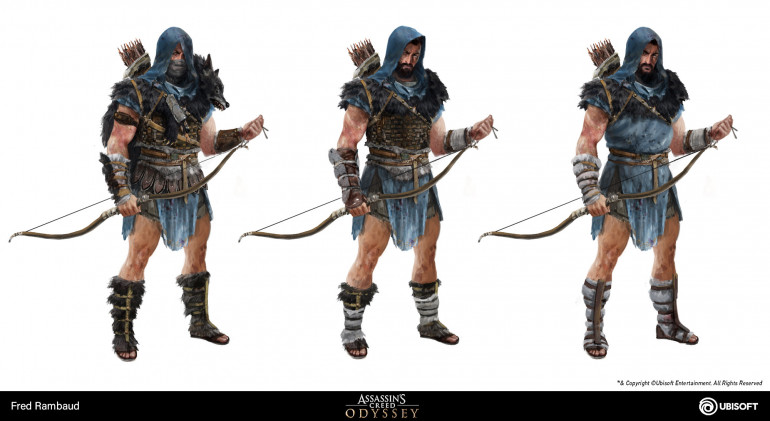 It makes me wonder if the history surrounding this Corps was the inspiration for the Athenian Marksman side-quest in Assassins Creed: Odyssey (wouldn't know, stopped playing that one after 10 hours).
It makes me wonder if the history surrounding this Corps was the inspiration for the Athenian Marksman side-quest in Assassins Creed: Odyssey (wouldn't know, stopped playing that one after 10 hours).So, some archer support would be needed for my Athenians. And, given the more organised origin of the Athenian Archers, I decided to match the AC:O artwork and give the rank archers all helmets – not good bronze helmets, though, just cheap iron ones, enough to make them look like they had been somewhat equipped out of the State’s purse.
Additionally I also did a few slingers at 28mm as I’ve been wanting to introduce Mortal Gods to some of my local gaming groups – completing the slingers means that I finally have two demo forces which I can use in a 150pt game, or a 300 pt game.
At the 15mm level, most archers for Greeks are Psiloi elements, with the Athenians being the only nation capable of upgrading these to line Bowmen. In reality, I need more archers, but the helmeted heads come from other models, so these eight elements will have to do for now.
I’m getting close to finishing off my initial Athenian Corps…
Next, the horses and the tridents…
Make up your mind, Chronos!
DBx Bases: 48 + 7
15mm Spears: 128
DBA Corps: 1
Saga Points: 6
W/D/L: 1/0/4
So, another weekend at the club, another three games with the Athenians. But, once again, they were opponents out of time – perhaps after their last encounter, the Greeks retreated to their ships and set off again, only to once again get waylaid onto some weird continent that they certainly didn’t recognise – I think either Chronos or Eris were playing some weird joke on them…
Game 3
My first opponent was a II/48 Mithridatic army (don’t ask me – best I can tell, its some successor to a Macedonian successor…) – more pikes and some cavalry.
I managed to spread my line out as planned, and eventually the lines clashed, going up against light troops and Auxilla on the left, whilst a detachment clashed with the cavalry on the right.
The light cavalry were quickly forced to flee, but a series of bad rolls meant that I wasn’t able to get the kills I needed – my opponent remarked that his general was very lucky in surviving multiple rounds of combat, when he should have died fairly early. Eventually, the Pikes in the centre managed to get the breakthrough, and, with my line in tatters, it ended up as a meat grinder. The score was eventually a 3-4 loss, but it could have gone either way, in reality.
Game 4
My opponent switched to a II/23a Pre-Islamic Arab army, which meant I was going to face Blades as the main force – goody.
For this game, I managed to become the defender, and, instead of the usual two ploughs you can get for compulsary Arable terrain, I decided to get a City Built Up Area instead – the initial plan was to use it for a camp, and try somthing a little different.
It was actually quite a novel change, as we had to read up on the rules for BUAs as my club doesn’t seem to use them that much. My opponent decided to put the BUA back near his board edge, and I decided not to garrison it. And that proved to be a major mistake.
After I spread out my line, my opponent was having some issues with his broken force using up his PIPs faster than he would have liked. Because of this my spears were able to quickly outflank the blades and they found themselves with their backs literally to the BUA’s walls, and losing combats quickly.
Not that that meant I was winning everything – on the left, a unit of Psiloi and Light Camels clashed and proceeded to fluff the combat completely, and the camels’ accompanying Light Horse eventually managed to maneuver away, race through and eventually sack my camp.
But with the blades fighting for their lives, the spears outflanking them took a toll – first their supporting bows were cut down, and then the blades eventually succumbed as well. The result was a 4-2 victory for me.
My opponent commented later that he probably should have tried to storm the city, although with a base +6 modifier for the denizens, I don’t know how that would have worked out in the long run…
Game 5
After lunch, my opponent and I agreed to play the game again with a more “traditional” game board, given that the split in the Arab forces caused a major disadvantage for them. Hopefully, this revised game would provide somthing a bit more familiar for us.
Not that it mattered much, as I completely fluffed my deployment. I had a forest in my deployment zone, and it was far enough forward that I couldn’t deploy my line outside of it – and this really had me going for the first two bounds as all my PIPs were spent trying to get my troops out of the woods.
And when the Arabs hit, their point of attack was directly on this weakness in my line – you see, Spear rely heavily on being able to overlap their opponent, not only to reduce the enemy modifier, but also to create a support modifier for themselves…and this support modifier only applies in open ground…as well as spears taking a negative modifier whilst in forests. My opponent was seriously punishing me for this mistake, and it was over a few bounds later. A 1-4 loss.
Xeno
DBx Bases: 48 + 7
15mm Spears: 128
DBA Corps: 1
Saga Points: 6
The term “Xeno” is Greek in origin. It technically refers others, or those different in origin. As you can guess, its been co-opted into English in this same form – Xenophobia is a fear of those who are different in origin. Its also used in taxonomy, referring to strange or having unusual traits – the Xenocyon, or “Strange Dog” is believed to be an ancestor of the African Wild Dog.
Also, Zeno was Greek name, and is associated with multiple personalities throughout the ancient era, most notably Zeno of Elea, a philosopher who was known for his paradoxes, an example of which is Achilles and the Tortoise.
So, what has this all got to do with my painting? Very little actually..
As some of you may have guessed, I’m actually doing a second project alongside this one – the people on the SAGA facebook page are going a “point per month” project, and I used my recent time to do this month’s point. But I decided to add somthing to my Hoplites project as well, so I did a point of Gauls and Iberians, since I knew I’d need a few bases of these also for the Syracuse army corps I’m planning on.
Its interesting that Syracuse is the only army that has foreign allies in its ranks. They do exist for Alexander and the later successors, but the mainline Greek armies are pretty much exclusively Greek. Its almost like Syracuse realised they needed the extra men, and just hired foreign mercenaries to bulk the army out.
Ah, well, enjoy some pictures
Next month, we’ll get back on track
The second Line
DBx Bases: 44 + 7
15mm Spears: 119
DBA Corps: 1
Saga Points: 6
Here’s the thing about most Hoplites from the Classical Greek City-States – they were not professional soldiers. Certainly, small corps of professionals did exist in certain places – the Epilektoi were a standing regiment in cities like Athens, Argos, and Thebes, and Thebes also created the Sacred Band to strengthen their army, but the majority of the Hoplites in the Phalanx were regular citizens. Citizens who could afford afford the Panopoly of a Hoplite warrior generally numbered around 1/3 of the total population, and since they were mainly artisans or farmers, they generally did not have that much standardised training – although some cities did offer a training program called the Ephebos where young men served the state for a couple of years and formed a standing millita.
This, of course does not apply to the Spartans, and their whole Agoge thing…
Basically, this means that as well as the usual Phalanx, there were also lighter Peripoloi in an army – if not of the younger warriors, you could also see conscripted troops equipped fairly lightly by the state to bulk the ranks. Its this latter option I can see being used to create the next lot of troops for the Athenians – in this case, they’re rowers on the ships who have been given a shield, spear and dagger, maybe a helmet, and told to get in the battle line.
I’m actually quite liking these bases – the lack of armour means that their tunic colours are on full display, and combine that with their less uniform stances means they really do stand out as lesser troops compared to the main Hoplite bases. The other thing I like/dislike is the troop that is facing a different way to his comrades. I dislike it from an asthetic perspective because it breaks the shield wall, but I like it from a modelling perspective because it makes it easier to rank up the bases: the previous set I had to modify after my first games as the shield on the left end of the base had a tendency to impact on models on the next base over. But again, they’re less well trained troops, so…ok…
Meanwhile on the 28mm front:
A mix of medium and light hoplites (from the perspective of Mortal Gods) was what I was aiming for – my next goal is to get enough models together to finalise an into set for Mortal Gods that I can take to some of my local clubs, so getting some of these lighter troops has been a bit of a priority for me. Its also why I’m going to be doing some Athenian missile troops before too long.
An Athenian Hoplite in the Court of King Malcolm
So, I finally managed to get a couple of games of DBA in at my usual club, re-learning the intricacies of the game and my hatred of Barkerese. I wasn’t expecting much from my army at this point, but I went in knowing that, so low expectations and all that. I only got two games in against the same opponent, who was using III/45 Pre-Feudal Scots with II/81d Strathclyde allies (namely a unit of Knights and two of Spearmen)
One day, whilst out testing their newest class of Triremes, a group of Athenians rowed into a sea mist and somehow found themselves displaced by 5000 miles and 1500 years to the coast of Dark Ages Scotland. Landing there and finding themselves unable to speak to anyone (as well as probably shivering like mad in the changed climate), they immediately annoyed the Scots who gathered up their local forces (including some visiting forces from Strathclyde), and descended on the bewildered Greeks.
Round 1
The terrain for the two games was the same – two fields of plough and two of scrub, although the plough only played a part in the first game, when my opponent, who was the defender, rolled a 1 for his PIPs in the first bound. My plan was to line up between the two close areas of scrub and try to take the charge, but I ended up charging in on my third bound after his allies got stuck in the muddy fields.
It didn’t last long, however – Pikes are really good vs infantry, and I didn’t really give myself enough room to spread out and get the flanking bonuses I needed to win the fights. After two bounds of combat, the Scots made a breakthrough, and at that point it was all over.
Hades.
Round 2
As the attacker again, I chose to set up in between the scrub again to try to protect my flanks, but, in retrospect, I would have been better off in the open fields, getting the spread out line since my opponent’s frontage was shrunk with his pikes.
The end result was a fight that eventually broke into two parts – with my General and a few others going against the Strathclyde on one side, and the rest taking on the Scottish pikes. I managed to last longer this time around, mainly suffering from push backs rather than kills (the Scottish general’s 4Wb was particularity bad at getting kills this time around), but, eventually, one of the pike columns made the breakthrough and it was all over.
So, lessons learned? Yes, Spears are nothing like Blades! Spears are good all-rounders, but against most other troops in the open they really do rely on having the support and flanking bonuses to win the fights. They really can only go toe-to-toe vs Auxillia and lighter troops – against Blades and Warband, they really are average. Making sure I have plenty of room to spread my line out is a must for this force, and the Psiloi really are for making sure I don’t get flank charged – so I should mainly use them for ZoC denials.
For future games, I think the first couple of bounds will be spent only advancing 1BW at a time, spreading the line out. It was worth trying using the scrub to guard my flanks, but, ultimately, I don’t think it really works as well as it may for Blades. It might work if I had woods or difficult hills, but scrub just delays the enemy.
I will also be revising my prayers to Athena, as rolling 1 to your opponent’s 6 for combat really doesn’t help things…
Peltasti
DBx Bases: 38 + 7
15mm Spears: 95
DBA Corps: 1
Saga Points: 5
(I’ve removed the targets since I’ve added so many elements to my projections that I can’t keep up with what the targets are anymore. But the posts below should give you an idea of what I am aiming for).
Peltasts – the light infantry of Classical Greek armies. Looking back over the term, its interesting, because the role and name seemed to vary over time, with the Greeks, Macedonians, Persians, and even the medieval Byzantines using the term to refer a variety of troop types. The name of the troop came from the Pelte, a crescent-shaped shield made of wicker wood and/or leather that the infantry type would be distinguished by.
Best I can find, the style of combat – a lightly armoured infantryman who would skirmish, using javelins to harass the enemy and guard the flanks of the main Phalnax – originated in Thrace, where it was the standard combat style of the tribesmen in the area. Over time, the Greeks hired Thracian mercenaries to provide troops of this type, and eventually adopted it for some of the poorer soldiers in their state armies. Peltasts were also one of the main mercenary types hired in the Classical era, which kind of makes sense, since a poor man can probably scrounge together enough money to buy a shield, dagger, and a few javelins, maybe a helmet, and hey, he gets hired for a battle that he can most likely run away from if things go bad!
In most wargames, javelins are short ranged missile weapons – in SAGA, they actually have a dual purpose, being a ranged weapon that the troops can throw for free after moving, and as a one-time melee buff when they charge into combat. In DBx, most Peltasts and similarly-equipped troops are the basis for the Auxillia troop type – lighter than Blades or Spears, but better suited for attacking in terrain, flank guarding etc., and don’t really do well in open terrain. They can also be used in a lighter role as Psiloi, and generally act as the Superior Psiloi troop type.
For my Athenian Army, the first appearance of Peltasts is in the Book II Later Hoplite force, where there is a list entry for sailors equipped for combat – in this instance, you have a choice of equipping the sailors as Peltasts (where they are fielded as Ps), or as Hoplites (Spears). I take this as meaning that the rowers of your ships are pressed into service on the main line, and the officers just equip them with whatever spare equipment they have to hand. This means that they get the shield and weapon, and maybe a helmet if one is available.
So, six elements of sailor Ps were done up, as well as two new elements of regular Ps, which I calculated I needed, but had not yet done (oops!)
The other two elements were a pair of Thracian Ps elements. As mentioned above, the Thracians were the originators of the Peltast fighting style, so the Athenians probably have a few of them as mercenaries to stiffen their screen. This pair of elements were painted with a bit of blue on their shields to distinguish them as Athenian, thus differentiating them from their cousins who will come later…
For the 28mm, I’ve actually got 24 peltast models built, including two unit leaders, but I decided to do a unit of 12 this time around – the rest can be done later. But the shields were a bit of a thing to do…whilst I definitely recommend Little Big Men studios for their shield transfers, just putting one on a shield isn’t really enough – You then have to paint the edges of the shield to match the front, and not many of them use the standard Vallejo colours…I was mixing and matching colours for hours, trying to get them completed and looking good. I also did a few transfer chop jobs, mainly to add some differing designs to the shields, as I figured the 28mm Peltasts should really have some shield designs rather than just the plain blue – these are actual troops equipped with their own gear, rather than guys forced to fight and equipped by the state. I guess I could have gone with the plain shields, but I do like the variety I ended up with.
Next up – the remainder of the sailors.
Home is where you lay your head
DBx Bases: 28/177 + 7/18
15mm Spears: 75/451
DBA Corps: 1/16
Saga Points: 4
I read somewhere once that “In war, amateurs think of tactics. Professionals think of logistics.” And, when you come down to it, they’re not wrong. Without food, water, fuel, medical supplies, ammunition, etc, an army, no matter how ancient it is, grinds to a halt. Or at the very least, is severely weakened in the field.
But, generally speaking, we wargamers don’t really consider the logistics of our armies – its somewhat off board, and we only work out who shoots what, and not how they got a hold of that ammo. Its only in games of a larger scale – the larger grand strategy games that really take it into account. Heck, the only GW game I’ve seen consider logistics is Battle for Armageddon from 1992.
The DBx games also don’t really take detailed logistics into account either, but they do take the effect of they army’s base, the Camp, in account on how it affects their morale. In DBA, losing your camp is the equivalent of losing an army element. In DBMM, the camp provides a bonus to army morale. And it makes a bit of sense to see it this way – at the Battle of Gaugamela in 331 BC, one of the reasons Alexander had to break off his pursuit of Darius was to go back and plug a hole on the Macedonian left that was allowing raiders to loot his camp. If his camp had been completely sacked, the Macedonian Army would have probably disintegrated.
As a result, camps are represented on the board in DBx games. In DBA, they’re a single base, but in DBMM, you can buy multiple elements, all of which contribute to the morale of an army. Now, for DBA, I’ve seen people use a single unadorned base as their camp, but I’m always of a mind to do somthing a little extra. And then I found Baueda, or, more specifically, their camps. These looked perfect to me (especially the Egyptian one!), and it seemed like an excellent way to do camps for my DBA forces. Well, for my other forces – as mentioned earlier, my Athenian camp would consist of a couple of beached Triremes (from Xyston) – mounted on a 40mm x 120mm base to keep consistency with other camps I was planning on doing.
But one camp? No, that would be too easy. I also used the opportunity to do some DBMM tents (from Baueda) for the Greeks. Initially, I was going to do six tents, but I eventually figured to include a camp kitchen (also from Baueda) to act as a bit of a centrepiece. If you can make it look more interesting, why not spend a bit of extra time? I also used 2mm PVC bases for this, since I had a few spares sitting around.
I then also took the opportunity to rebase some previous camps I had completed for my 15mm Sea Peoples (tents are from Essex here), thus freeing up some magnetic bases.*
You may notice that the tents aren’t alone there – that’s deliberate on my part. Initially, I did have the tents sitting alone on their elements, but they ended up looking boring. Plus any camp is going to have some detritus scattered around the place, so a bit of baggage here and there seemed like a good idea – make the camp look used. Plus, it allowed the individual elements to look a bit different.
Finally, I put a full camp together – its technically a Hellenic camp, but I’m going to use it for my Nubians and Ancient Libyans instead.
But on the better side of things, what does this mean? Yes! My first corps is complete!
10 elements of Spears, 2 elements of Psiloi, one camp and one element of camp followers. One month after starting, and I’m ready to start playing games of DBA again!
Or at least once my club starts meeting again…(Damn you COVID!)
So, phew – that’s a good start. Now I have to get working on a few upgrades for the next corps.
*Note – I use magnetic bases from Shogun Miniatures to mount my DBx stuff. Unfortunately, because Shogun uses USPS for delivery, and USPS doesn’t currently do services to New Zealand, I can’t restock my supply. I have enough bases to get through this project, but having some spares that I can either use or cut into the needed size is useful.
For the PVC bases, I glue magnetic tape to the bottom, which allows me to still use magnetic storage for them.
Psiloi
DBx Bases: 27/177 + 0/18
15mm Spears: 75/451
DBA Corps: 0/16
Saga Points: 4
In Ancient Greece, Psiloi were light infantry, who usually ranged ahead of the main battle line in a skirmish sceen. The name Psiloi came from the word psilos, which literally means “bare” or “stripped”, which, in some of the artwork of the time, seems to be literal for the skirmishers – some were only equipped with a shield, javelin, and possibly even a knife belt, and only that. And that was assuming they had weapons at all – the gymnetes (meaning “naked”) were men who skirmish ahead of the main line in little more than their birthday suit, picking up and throwing rocks at the enemy.
In DBA, Psiloi are the skirmishers of your army. Mounted two to base, they are one of the weakest troop types, but are still very valuable, since they are somewhat more able to move through terrain than other troop types – and thus can be used to pin or tempt enemies into terrain when they normally would not want to be – but also a direct threat to Elephants. They represent a large array of troops – not just the ancient and classical jalvelinmen, but also skirmishing archers, slingers, and even hand-gunners in the late 15th century. In the larger DBMM, Psiloi are divided into Inferior, Ordinary and Superior grades, with Ordinary being usually equipped with bows and slings, and Inferior and Superior elements both having similar descriptions – although I’ve always thought of the Superior elements being either more highly trained and heavily armoured than their Inferior counterparts.
In Saga, Psiloi are a troop type in the Age of Hannibal book – there they are rated as low-quality troops equipped with Javelins and really work on automatic – if they are in range, they throw their javelins, and if they aren’t, they move. They also don’t cause any disruption to your own force if they die, so I see them as a screen to soak up missile shots from the enemy.
But why all the exposition – mainly because the Athenians don’t have that many Psiloi to paint up for use. At best, they get two Psiloi elements per corps, and they are little more than javelinmen. The Xyston miniatures are fairly interesting for use with these elements – there are 24 base Psiloi model variants available, with a mix of tunics, hats, cloaks and sword belts. And some of the mixes are…interesting. There’s one guy who has a cloak, sword belt and a Petasos hat, and nothing else – I mean, at least he understands how to protect one important part of himself…I guess.
I only had 8 models to paint (4 elements total), so I divided them into a mix of guys wearing tunics and those who weren’t, and none wearing hats or cloaks. And although I was able to include some of the Athenian tunic colours, ultimately, their link to the army as a whole came from their shields, painted in the standard Anthenian blue.
Since I didn’t have that many to paint, I also took the opporunity to do a few more elements – the rowers. In DBA, as part of the camp (coming up next), you also get an element of camp followers. This usually represents cooks, washer women, servants etc. that form a last line of defense before the camp gets sacked. But I’ve had an idea of using grounded ship as my Athenian camp, so it made sense that the camp followers in that instance would be the ship’s rowers (Greek Triremes had about 170 rowers each to support ~15 deck crew and the same number of marines). Additionally, Rowers are available to Athenians in DBMM as Ps(I) elements, subject to how many boats you have in your force. So, bonus! Not only would I get my camp followers painted, but a few extra Ps units completed.
Heck, given the size of the oars these guys use, I can almost see them running forward and doing a Dwarf sweep with it…that’d be one way to disrupt a phalanx…
As for the 28mm scale…well…I only did 3 new models in Athenian colours (enough to do a group in Mortal Gods) because I had already painted a unit of Psiloi months ago, for some reason. Yes its a bit of a cheat, but I want to get somthing else done by the end of the month.
Anyway, a few new elements, and that’s most of the first corps done, apart from the last thing – the camp.
The first Phalanx
DBx Bases: 19/177 + 0/18
15mm Spears: 67/451
DBA Corps: 0/16
Saga Points: 3
So, next on the list are the regular line hoplites, the main force of my army.
Unlike the elites, these guys only get Linothorax armour – not that I mind, as painting flat white parts are somewhat easier that sculpted metalics. The regulars also kept to the mix of tunic colours that I’d worked out previously.
Now, according to the rolls, I need a minimum of 5 elements of Spearmen for my first Corps. Although I’m planning on actually using 7, since I’ll have 2 elite elements…oh, heck, lets just do all 10! Plus a point of 28mm Hoplites to match!
At least with this lot, most of the models had upright spears. There was one guy who pointed at an angle, but it was flat enough to his body that I figured it wasn’t going to be so much of an issue as the goon. And whilst the thought of painting 40 minis at once initially sounded daunting, I eventually was able to get into a rhythm that seemed to work, even if I was being propelled along by SCP readings…
The white for the armour was probably the most interest part of the process. Since you can’t highlight white (its the naturally lightest colour available), you have to create an off-white or very light grey to use as the base, which you can then highlight with straight white. The mix I use three parts white (Vallejo 951) to one part sky grey (Vallejo 989). On the palette, the light grey mix looks almost like white on its own, and you can only really tell the difference once the white paint is placed near it, or highlighting it on the models themselves.
By the way, I wholeheartedly endorse this mode of painting 15mm or even smaller minis, which I picked up in my early days of painting Flames of War. Use blu-tac to stick the minis onto the heads of iron nails, and use those nails as the grip you need when painting the individual models so you don’t have to touch them. When not being painted, you can stick them into a block of polystyrene you can pick up cheaply at craft stores. I’ve even started using the nails for other models, such as heads I need to paint separately, ship turrets, etc. But I guess if all you have is a nail, everything looks like…(ok, that one didn’t work).
So, after another week and a half,
Again, the 15mm Hoplites don’t have shield devices…yet. But they actually don’t look too bad in the long run. I can only guess how they’ll look once I get those transfers…
So, with that done, I’m almost complete on my first DBA Corps. Only a couple of elements of Psiloi needed, as well as the camp.
But that’s for next time.
Epilektoi
DBx Bases: 9/177 + 0/18
15mm Spears: 27/451
DBA Corps: 0/16
Saga Points: 2
Ok, so first batch of models – specifically the command elements and the elite hoplites. Originally, it was only going to be seven elements: C-in-C, 2 Sub-Generals, and 4 Elites. But after getting the minis worked out, and checking my forward planning, I realised I had a few hoplites left over, so I added the Mercenary officer I would also need.
But then I saw the officers I had left over and my eyes fell on one that looked very much like the Champion of Olympus model I had gotten as a promotion from Footsore a couple of years ago. And my mind started working…
Nine elements – usually enough for a decent chunk out of a DBA Corps, and I’m only getting started (what am I thinking???)
The painting itself also allowed me to confirm my paint schemes and colour mixing. I only had a few items that needed some custom work, such as the larger blue tunics/cloaks, and the Champion’s green cloak. If you get up close to them, the paint job doesn’t look the best, but I’m not a Golden Daemon contender – battlefield quality is Ok by me.
One thing I did work out with this batch was the mix of the grunt’s tunics for the entire army. I saw an article in an old White Dwarf once which said that it is possible to do a mixed colour army like the Brettonnians – the trick is to use the same palette of colours all the way through. So, if you use yellow in several places, make sure its the same shade of yellow – that should be enough to give some link throughout the army.
I knew there were several colours I wanted for the tunics on the grunts – blue (Vallejo 930 Dark Blue), mid grey (870 Mid Sea Grey), a blue-grey (816 Luftwaffe Uniform), and white (actually a very light grey so I can highlight with white). I knew the white would be a small portion of the tunics (since the Linothorax for the line Hoplites would also be the same white), but the rest? I eventually settled on groups of 8 (which worked fine, since Spear units have 4 models per base), with 3 Blue, 2 Blue-grey, 2 grey and 1 white per group. Add to that a mix of models per group, and whilst there was some variety for the lines, there would be a sort of uniformity amongst them.
The Champion’s element was a bit different, as his guards had white tunics – I figured that since the Champion himself had a white tunic, the guards would have something similar.
The Mercenaries, however, had completely different tunic colours. I’m thinking that when I get around to the Mercs, I’ll use some more cloth colours in there (tan, brown, green etc), but still keep to the idea of a limited palette to provide some uniformity.
The other big thing about the model – the helmet crest – was also a way to link the lines together. I was planning for my Athenians to all have blue crests, but I added some white stripes for the elites to mark them out a bit. The champion’s crests were all white, and the mercs – well, they all had Phrygian Cap helmets. The models I used for the mercs had already donated their heads for some head swaps, but I decided to use the caps as a way to show link across the base.
Finally, I worked out a few spear lengths – Xyston sells packs of spears made from brass rods 50mm long. Now that’s a bit too long for a Dory, but no so much for a Sarissa…
I eventually settled on 30mm long for a Dory, 20-25mm for a cavalry spear or for one used by a Thureophoroi, 15mm for a javelin, and, if I ever get around to doing some Macedonians, 40mm for a Xyston. Cutting the rods isn’t too hard – a bit of rolling it back and forwards under my hobby knife, and I can eventually snap the extra length off – the spares will be used as materials for standards, pins for heads and the like.
There was, however, one thing that got my goat up – this goon:
Whilst the other models in the set all had their spear relatively upright, the way this guy’s had was angled made things a heck of a lot more difficult (you can see the angle in the “Almost done” pic above). The models are already larger than expected as they’re “Heroic 15mm”, which mean that they’re actually 18mm tall, and there isn’t as much space to play around with on the base, unlike when I’m using minis from Essex. And the goon’s spear angle and base made situating them on the base as a group a bit more of a hassle.
So, lesson learned – I’ll be double checking all future models to make sure that sort of jiggering is not required.
On the 28mm side of things, it was a fairly straight forward job – mostly copying the scheme of the existing elites, and a few custom jobs for some new characters.
I was even able to find enough models in the 15mm officers to be able to recreate my 28mm heroes in 15mm scale
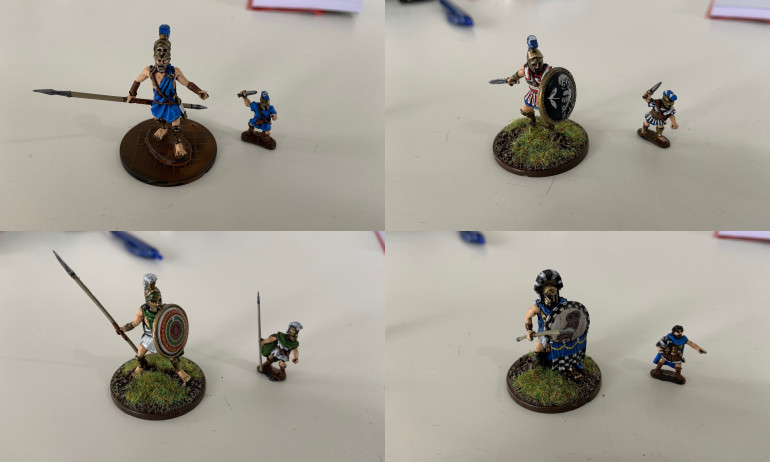 Clockwise from top left: Medium Armour Promachos, Heavy Armour Promachos, Andronicus the Defender Lochagos, Champion of Olympus
Clockwise from top left: Medium Armour Promachos, Heavy Armour Promachos, Andronicus the Defender Lochagos, Champion of OlympusAnd so, just over a week later, I was done.
One thing you will note is that on the 15mm scale, the Athenians don’t have shield heraldry. My original though was that I could hand paint the devices onto the shields, but in practice, it turned out to be impossible for me – I just don’t have the skill in it. Transfers were the next option, but finding white and blue Little Owl devices in 15mm scale in good quantity is actually somewhat difficult. Veni Vidi Vici does have some on one of their transfer sheets, but its only two symbols to a sheet, and I’ve got over a hundred to do, so not really economical. And a custom run from them would cost at least £150, so, no. The Little Big Men transfers I’m using elsewhere are also not an option, as they only have two devices in black on white – useful for a hero and some standards, but not economical for the project.
*Sigh*
I guess they’ll just be left to their own devices for now…(yes, yes, yes, I’m finishing this entry soon…).
Nine DBx elements down, a full Hearthguard unit completed, heroes done, and a Tropharion completed for desert.
But I’m only getting started. Already have the next batch on the table, and its a bunch of regulars.
The clean before the storm
DBx Bases: 0/177 + 0/18
15mm Spears: 0/451
DBA Corps: 0/16
Saga Points: 0
Because I rent, I keep the area around my painting table covered by a plastic dropsheet, which I replace each year. This way, I stop my landlord’s carpets from being dotted with splashes of paint, and other detritus from the hobby. The sheets aren’t anything fancy – just plastic painters sheets I pick up from the local hardware store – but I justify that the cost is definitely less than having to pay to replace the carpets when I finally move out.
And because it was December, and I was starting a new project, I used the opportunity to also do this cleaning, rather than leaving it to the new year and having to tear everything apart mid-project – not just replacing the sheets, but also clearing up my work area, since it tends to get crowded with abandoned and half-finished tasks, left over materials, general debris, dust, etc etc.
So with a refreshed work area, dust blasted, left over projects put away (you don’t want to see my study right now), I was free to begin working on my Hoplites.
But where to begin?
Well, I actually had done some prep work earlier in the year. I started by painting up an OpForce for Mortal Gods – this allowed me to test some of the colours that I was considering for my main force.
I had also started on some of the characters and elites for my Athenians, although these ones were somewhat more complex
Finally, I had done up a point of SAGA Psioli, but we’ll get to them later.
But for the main project, where do I start from? Well, we start at the very beginning – MVP (minimum viable product). Paint the smallest amount needed to put a DBA Corps in a game, and work out from there – adding elements to allow other forces to be used, add allies, etc.
In this particular case, this meant that the first Corps I would be painting was I/52e – Early Hoplite Greek, Early Athenian Hoplite 668-541 BC. Its a fairly straight forward force consisting of:
- Hoplites with General (Sp)
- Hoplites (Sp)
- Hoplites (Sp)
- Hoplites (Sp)
- Hoplites (Sp)
- Hoplites (Sp)
- Hoplites (Sp)
- Hoplites (Sp)
- Hoplites (Sp)
- Hoplites (Sp)
- Psiloi (Ps)
- Psiloi (Ps)
Hopefully I can get this completed before my Christmas break is over.
With that decided, I figured the best place to start would be the command elements. Not only would this match the character models I had already completed, but it would allow me to complete the unit of SAGA Elite Hoplites I had begun – I had decided early on that the Elites would be wearing the metal Cuirass armour, whist the regulars would be have Linothorax.
The other thing I needed to do was t0 clean up the metal models that Xyston had sold me. And generally speaking, I was quite happy with what I saw – no real casting issues, the detail was there. If there was one complaint I had is that the models had probably a little too moulding flash compared to what I like.
But in that particular respect, it isn’t a show-stopper for me. Unlike some of the stuff I’ve gotten from Forge World, which had similar amounts of flash, these models did not have casting misalignments to go with the flash – unlike FW, where if you saw this amount of flash, you wondered how badly aligned the moulds were (I had a few models that I had to bin because they were misaligned up to 1.5mm, and that’s just too much to try and scrape over).
I also did a quite a few headswaps for this batch, as I wanted all the Athenian elites to have Corinthian-type helmets.
Finally, I decided on how many minis I would need. One thing I had already determined is that Generals/C-in-C’s would have a standard on their base to mark them out, where as Captains/Sub-Generals, would not, or at least replace the standard with a trumpeter instead. Add to this a decision to paint up four elements of Elites, as the Athenian elite hoplites, or Epilektoi (rated as Sp(S) in DBMM, as opposed to Sp(O)) has a limit of four elements in DBMM. I’d painting up more than I intended, but it would finalise one of my army choices for DBMM, and cut down painting for when I did the second Athenian Corps.
As the crossover to SAGA, three new Elite Hoplites, a Veteran Hoplite to act as their unit leader, and a new character (medium armour).
Lets see how quickly I can get this lot done!
Preparing the Muster
DBx Bases: 0/176 + 0/18
15mm Spears: 0/448
DBA Corps: 0/16
Saga Points: 0
When I said this was a long-planned project, I wasn’t kidding. Spreadsheets to work out the most efficient way of purchasing models, test painting to work out colour schemes, test forces to work out how to paint 15mm models like these (I’m mostly used to 28mm stuff).
And then there’s the supplies I’ve stockpiled
Varnish, undercoat, glue, sand for basing, new paint brushes, new pots of paint, the quantity of which was determined by how I plan to paint things – although this is also taking into account the absolute mess the global delivery network is in at the moment, and how confident I am of being able to get resupply in the near future. (And now we have the diesel problem to worry about…)
Also, the bases I’m using are shown – over 180 of them of various sizes.
And, lo, the miniatures
That is 3.35kg of metal (what type of metal does Xyston use? Doesn’t feel like white metal). I sorted them into category bags, so I’m not constantly sifting through a pile of metal, or tons of smaller bags. I don’t have a full breakdown of troop types, but I can tell you that I have five different types of shields, and of those, there are over 300 of the Aspis type (so I really do have the 300 here…)
I’m almost done with what I currently have on my table – I think I’ll have it all done over the weekend or not long after that. After which, the effort begins…with cleaning…
A long awaited project...
DBx Bases: 0/176 + 0/18
15mm Spears: 0/448
DBA Corps: 0/16
Saga Points: 0
The origins of this project are a confluence of circumstances. Last year, I was introduced to the DBx series of games whilst visting a new games club. I’ve always been into historical gaming to an extent, being very interested in SAGA, but the more large-scale games have always been a bit…opaque in their ruleset. But the promise of being able to play a game large-scale battle with only 12 elements (so, max 50 minis – hey, similar to SAGA…), was very attractive, so I quickly started in the ruleset, DBA in particular. Multiple armies came to mind to build, but the Greeks were one that really caught my eye. Doubly so when I started looking around for minis to use and came across Xyston/Scottia Grendel – their minis in particular looked excellent, so a Greek force from them went on my to-do list.
And then Covid got serious.
Many things went off to the side as a result, and I moved to other projects – but the idea of making a Greek army for DBx remained in my mind. Then SAGA Age of Hannibal was released. And I finally got a hold of the Mortal Gods starter set. And I bought a bunch of Victrix hoplites for both.
Eventually I said “screw it” – although I was originally going to make the Ancient Egyptians from Essex my first major DBx force, I bit the bullet and bought [AMOUNT REDACTED TO MAINTAIN SANITY] of minis so I could build a large amount of 15mm Classical Greek forces. The last box of these from Xyston arrived recently, so I was able to get started.
So, how to paint them? Well, this is the concept art from Assassins Creed: Odyssey. I like blue as a colour for my armies (My favorite scheme is mid grey with blue highlights, and gold trim), and this Athenian art certainly gave me some inspiration on how to proceed.
What to build the forces as? Originally, I was planning on doing an entirely Athenian force (to match with my choice of faction in Mortal Gods), with a few Thracian allies, since some of the DBA Athenian lists have Thracian elements in them. But some of the guys in my group pointed out that, “Forces that are all Spears can get boring after a while.” That made sense, and after some reading of the lists, I saw that the Athenians had several additional options for allies, but it was the Thessalians that caught my eye – plenty of cavalry that could diversify my forces.
Additionally the mercenary hoplite, peltast and thureophoroi units can be used as part of of a future Macedonian and Successor force, which not only cuts down on stuff I have to buy and paint, but the minis are also available from Xyston.
After a bit of playing around with stuff on paper, I decided to track my progress through a combination of criterion. Firstly, I will track when a full 12-element DBA army has been completed – I’ll refer to each as a corps. Each corps will consist of the base elements, plus the options available for the force. Additionally, some of the corps overlap – the Athenians, for example, used Hoplites and Psioli in all their armies, with additional forces (cavalry, archers, theuropoli) making up the differences. I eventally settled on the following groups of blocks, split up by the available overlaps:
– 1 x Thracian (I/48)
– 1 x Bithynian (II/6)
– 2 x Early Thessalian (I/52c)
– 2 x Later Thessalian (II/5d)
– 2 x Early Athenian (I/52e,f)
– 2 x Later Athenian (II/5b)
– 3 x Hellenistic Thracian (II/31h)
– 1 x Early Mercenary Hoplites (I/52j)
– 1 x Later Mercenary Hoplites (II/5i,j)
– 1 x Syracuse (II/9a,b)
Three corps can be combined for a BBDBA game – So, if I wanted, I could go two Athenian Corps and one Thracian Corps, two Thessalians and one Mercenary, two Thessalians and one Athenian…basically, there’s a lot of options available for me if I went for one of the larger games.
I then added in how many SAGA points I had completed to monitor the 28mm model progress, and then the base count and spear count to show how many individual 15mm models I had completed (Although it mainly gave me multiple numbers to montior – I kinda like statistics). And whilst the numbers are big (176 bases required for the 15mm models, plus another 18 for the various camps!?!), its not like I’ve limited myself to a month to do this – I fully expect this project to go well into next year – which is good thing, really.
So, with 450 spears, I’m definitely not recreating the 300, but I am doing up a force worthy of kicking ass at Marathon…wait, I can sub some of these Merc Hoplites into the Later Achaemenid force (II/7) as well…ooh, possibilities…
































![How To Paint Moonstone’s Nanny | Goblin King Games [7 Days Early Access]](https://images.beastsofwar.com/2024/12/3CU-Gobin-King-Games-Moonstone-Shades-Nanny-coverimage-225-127.jpg)
